A little more than a year ago we arrived in Tassie with a plan to live here. Not a very concrete plan. We’d bought a house without seeing it: a small, post-war home that had been meticulously renovated by the previous owners. And painted a delicate shade of blue. We knew almost nothing about the northern Hobart suburb we’d be living in. We weren’t sure how long we might stay, or whether we would like it. But we packed up the car and drove down from Sydney to find out.
Turns out, it was better than we ever imagined.
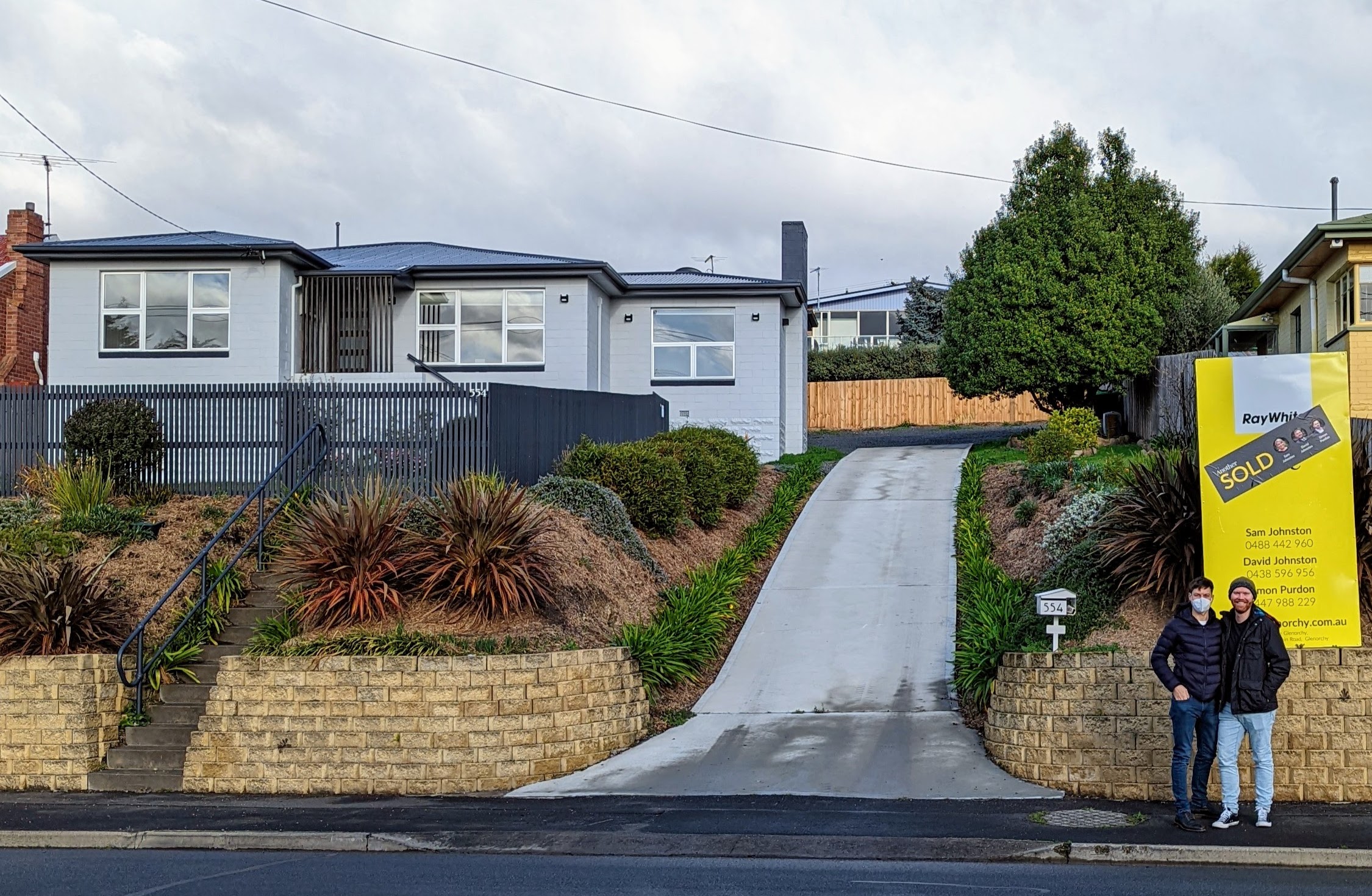
Our little blue home in Rosetta, Tasmania
This is my love letter to lutruwita / Tasmania, in all her beauty and untamed wildness…
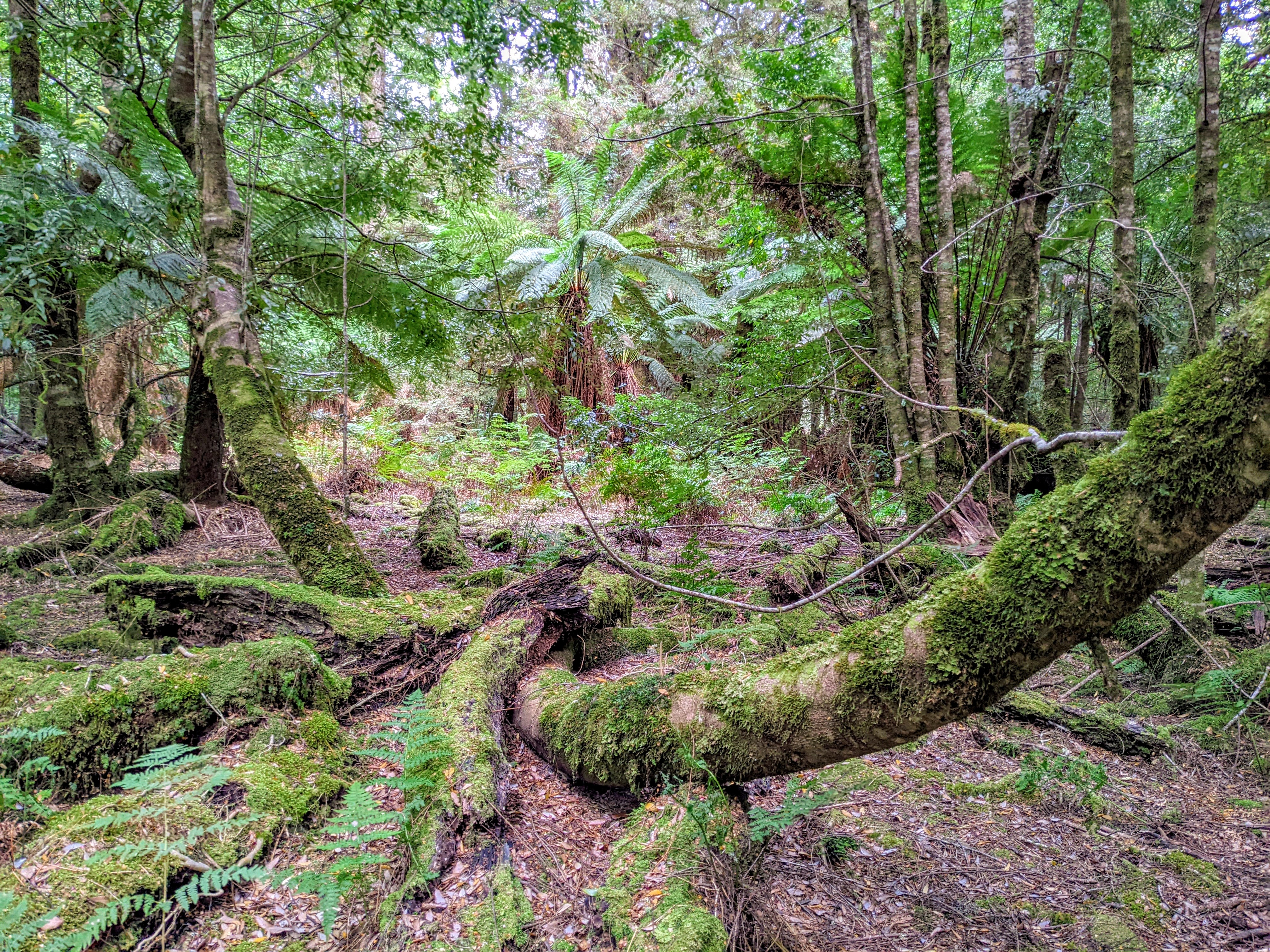
The unspoilt rainforest of takayna/Tarkine, west coast
In the early hours of the morning of 2 July 2023, we disembarked the Spirit of Tasmania at Devonport, the sun still settled below the horizon, our car packed full of our favourite belongings and a pair of mattresses strapped to the roof.
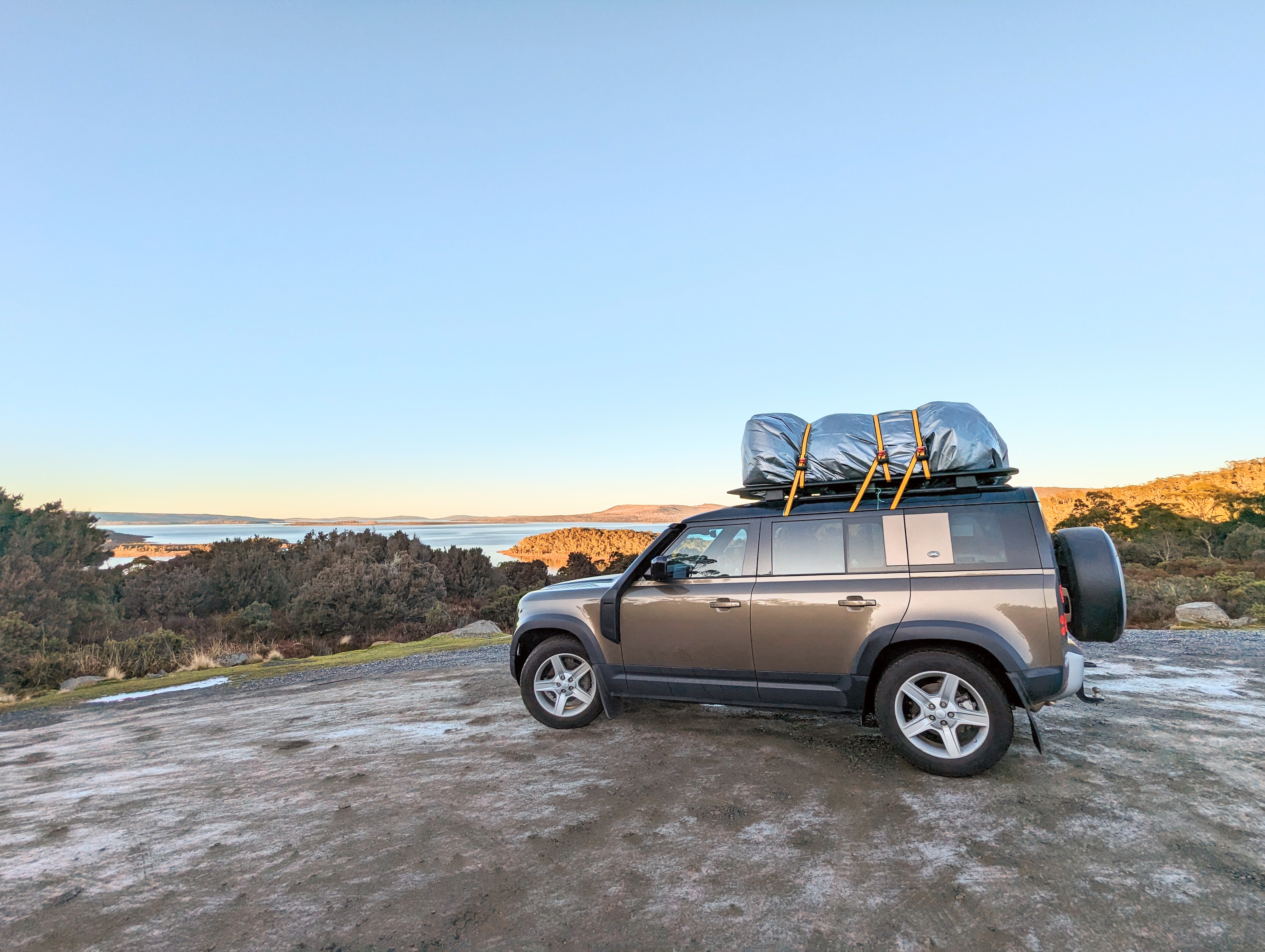
Driving to Hobart from Devonport, via the central highlands
We left the outskirts of town and began climbing in altitude. The hills surrounding us were capped with frosted grass and a dense morning fog obscured the road beyond a few metres ahead. The dash read 0°C and the roads traversing the central highlands were white with winter ice.
People thought we were mad moving to Tasmania in the middle of winter. But after living here for a year, and experiencing all four seasons, I can say that I truly love winter in Tasmania. Once you decide to embrace it, it’s all rather beautiful. And inviting.
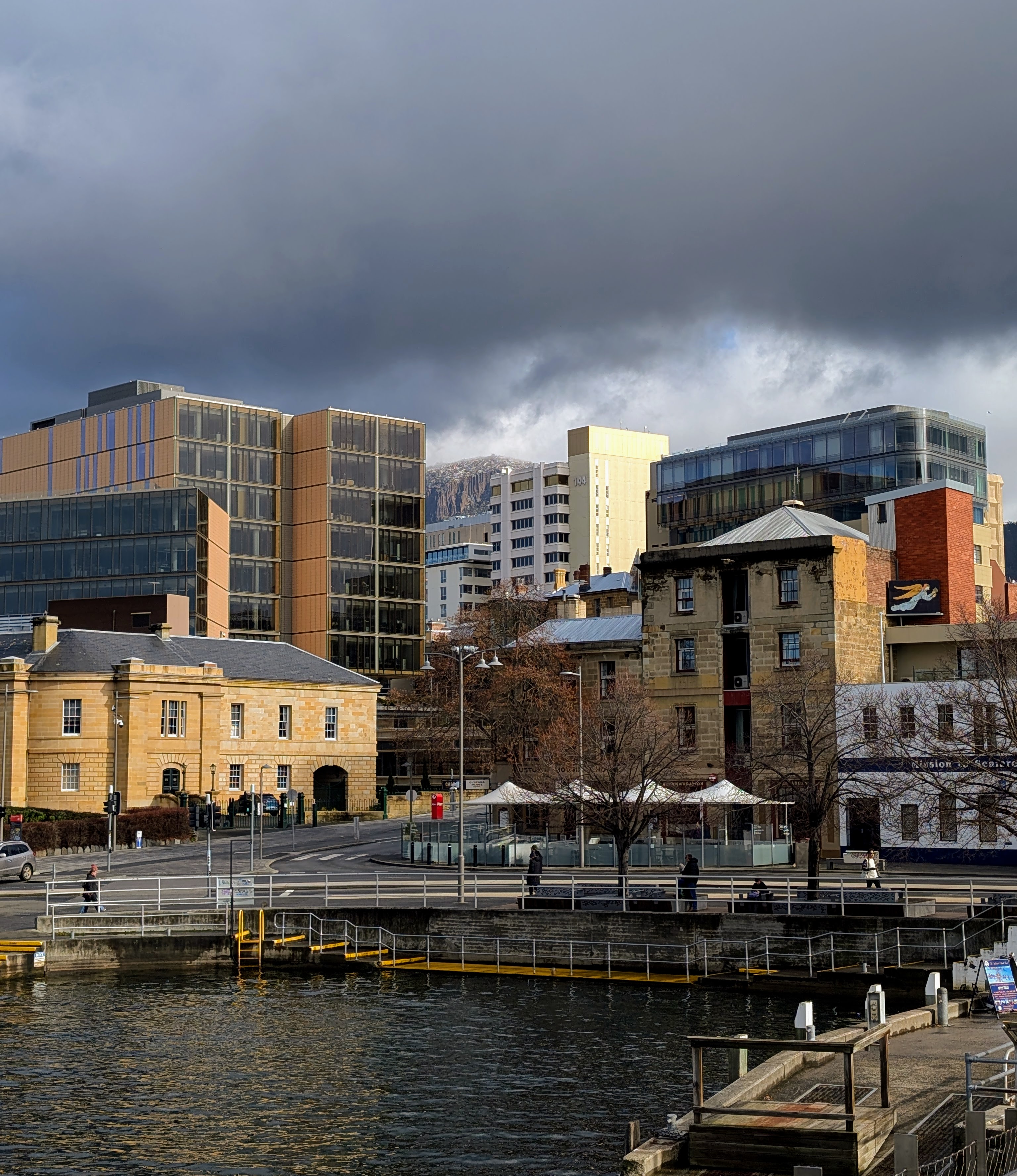
A snow-capped kunanyi/Mt Wellington above Hobart city in the late winter afternoon
And even though the arrival of winter was abrupt and early, it is a special time of year down here. People who live in places that are cold and where the night arrives too early have a certain kind of resilience, and an appreciation of nature. Even in the depths of winter. Perhaps especially in the depths of winter.
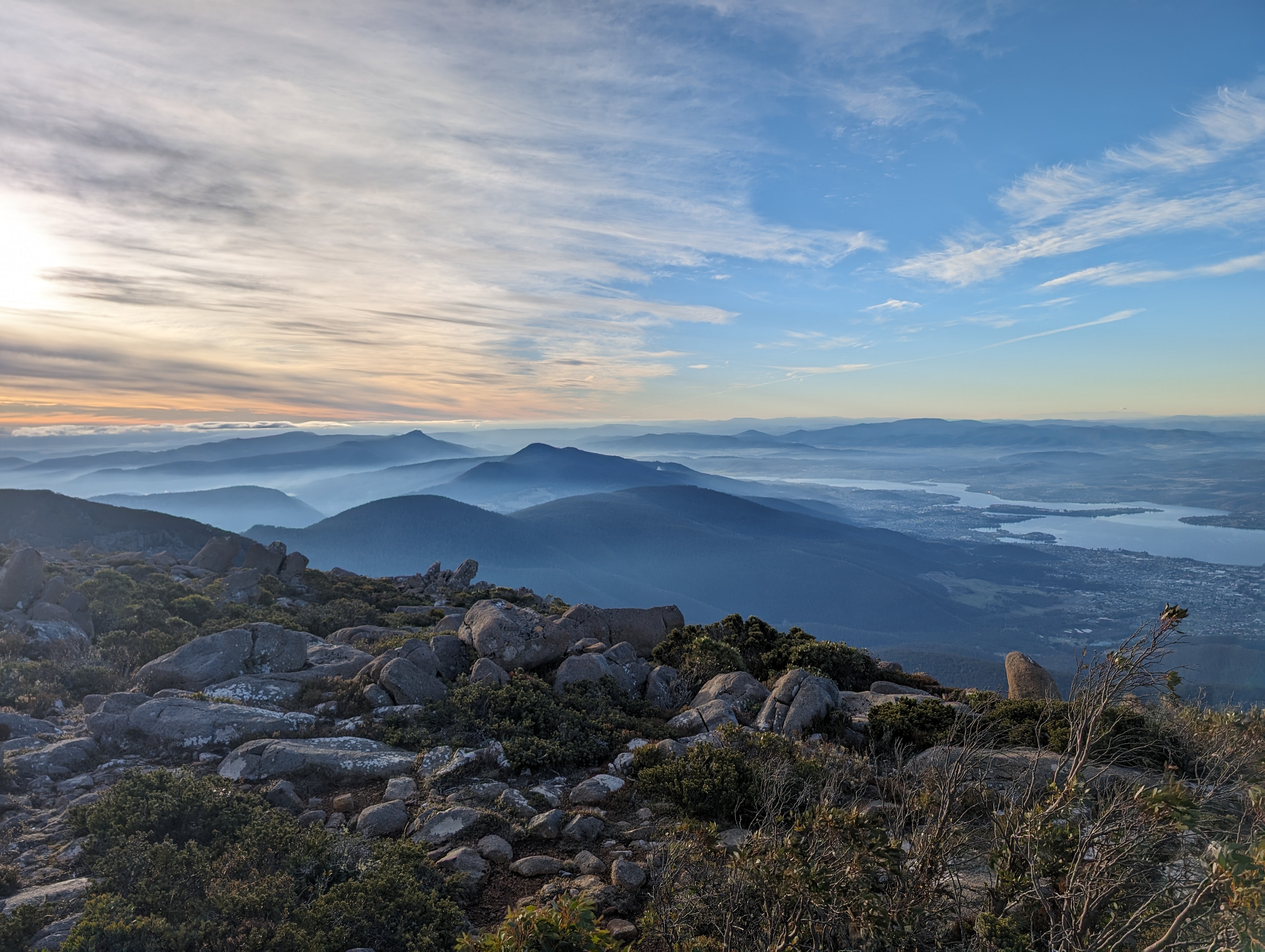
A view from the top of kunanyi/Mt Wellington in July
In the lead up to this winter, there was a tourism campaign being run to encourage interstate visitors to Tasmania in the Off Season - to come down for air and become a winter person. The campaign says:
In Tasmania, winter is when things get wild, weird and wonderful. Let your inhibitions drop with the mercury: savour slow-cooked feasts around blazing log fires, dance wildly at winter festivals and enchant your senses in alpine realms. From cosy seclusion to cold-water invigoration – the Off Season is open to just about anything.
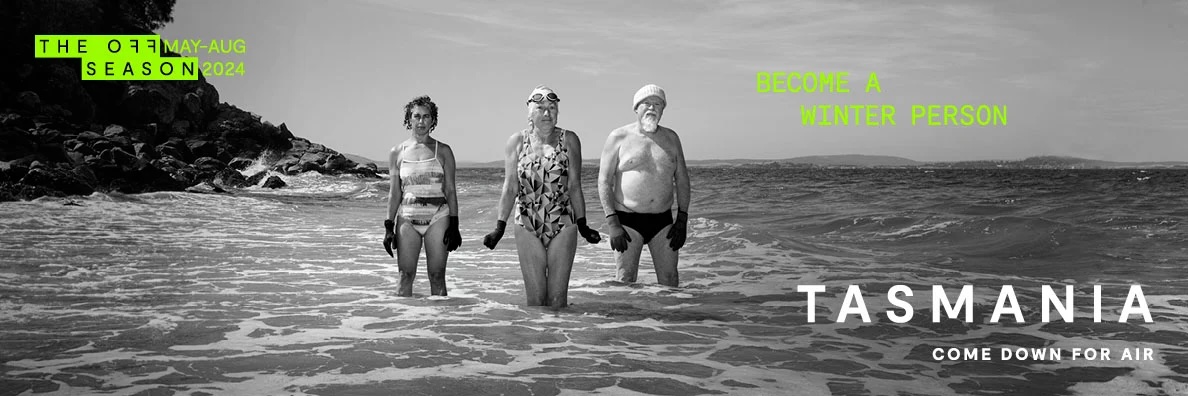
The Off Season campaign
So we embraced winter and became winter people.
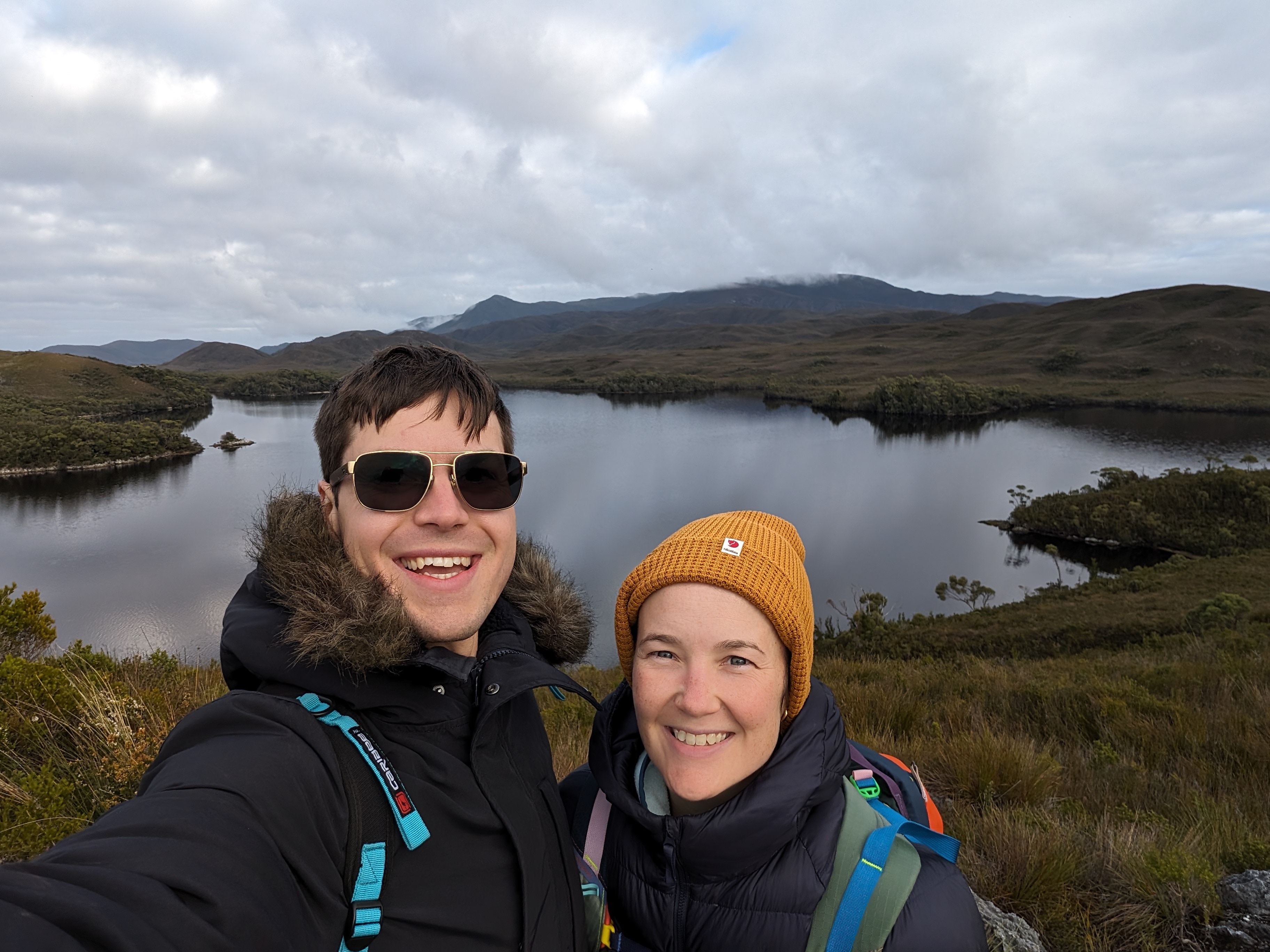
At Southwest National Park one cold winter's day in June
For me, it starts in the home and everything expands from there. I leant on my experience from living in Norway in winter and brought hygge into my home: soft lighting, fluffy blankets, cosy corners, candlelit dinners. I’ve planted deciduous trees and bulbs in the garden that will announce the arrival of spring, and new life, with beautiful blooms. And perhaps the most significant investment in our winter life, and another homage to those Scandinavians who really know how to do winter, was the custom made sauna we had built and installed in the backyard that first winter we arrived.

Our sauna and firepit in the backyard, covered in frost at dawn
My previous self wouldn’t have hiked in the middle of winter, but a cold day of single digit temperatures doesn’t stop the committed members of the Hobart Walking Club from going out to summit a new peak. I joined the club when I moved here, and purchased warmer hiking clothes.

Hiking in winter
And of course, the cold doesn’t stop 3,000 people from charging naked at the Derwent River on a dark winter morning each year to mark the winter solstice with the annual nude swim. I haven’t done that, but even in winter we continue to rinse ourselves under the garden hose before each sauna.
The first day of June officially marks the beginning of truffle season in Tasmania. This year, we spent a weekend at the Truffledore with owners Ina and Timo, foraging for black winter truffles in the truffière under a crisp winter air. We experienced first hand the joy of discovering a beautiful black French truffle, formed in darkness among the roots of oak trees growing in the fertile soils of northern Tasmania. Australia’s first black truffle was harvested in Deloraine, Tasmania in 1999 and Australia is now the fourth largest producer in the world of these deliciously scented earthy diamonds.
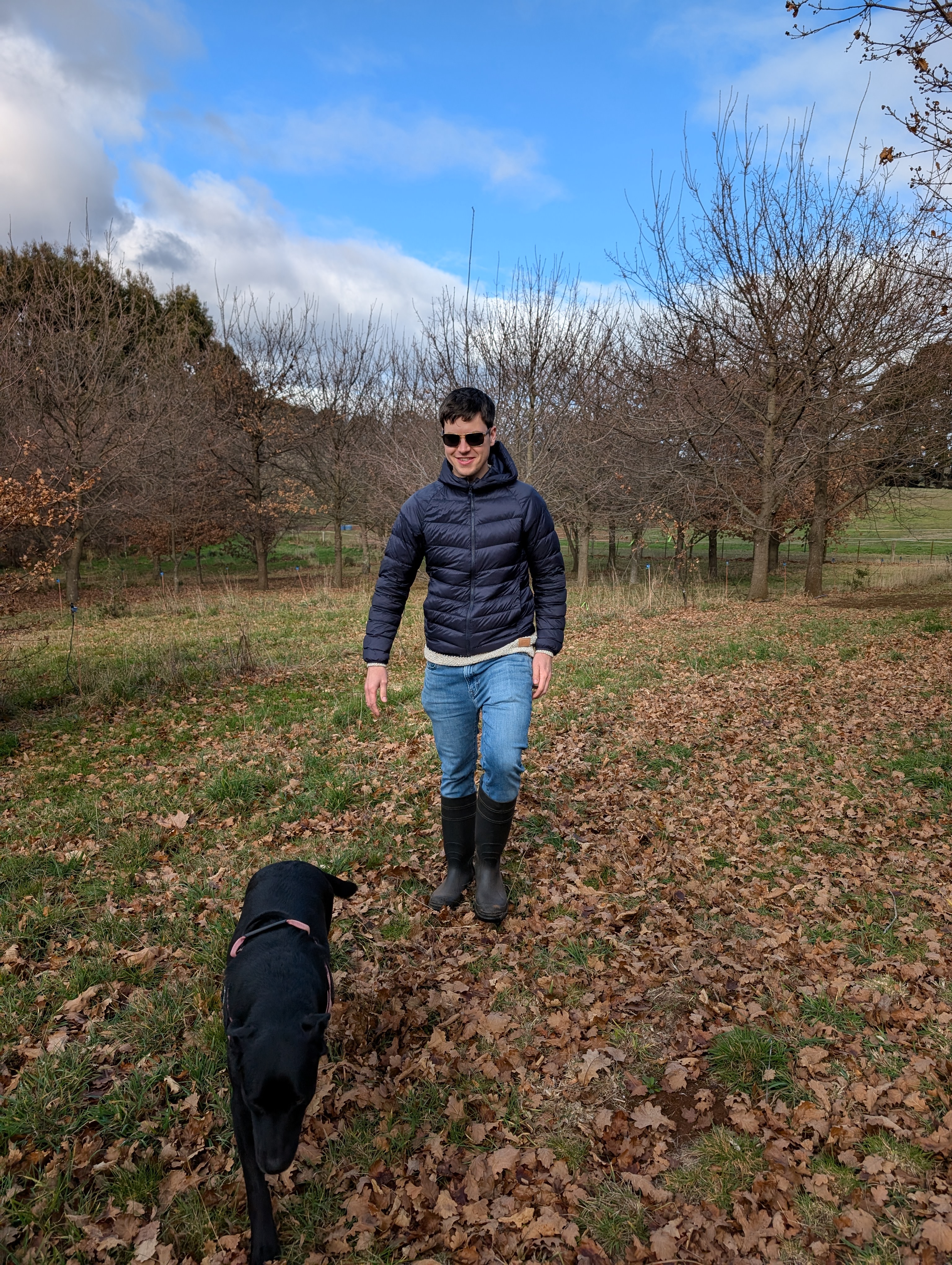
At the Truffledore truffle hunt and winter feast experience
After an hour or so of watching the eager truffle dog Kiki search for and uncover our subterranean treasures, we were treated to a spectacular four course lunch made by Timo, each course showcasing the winter truffles at their finest.
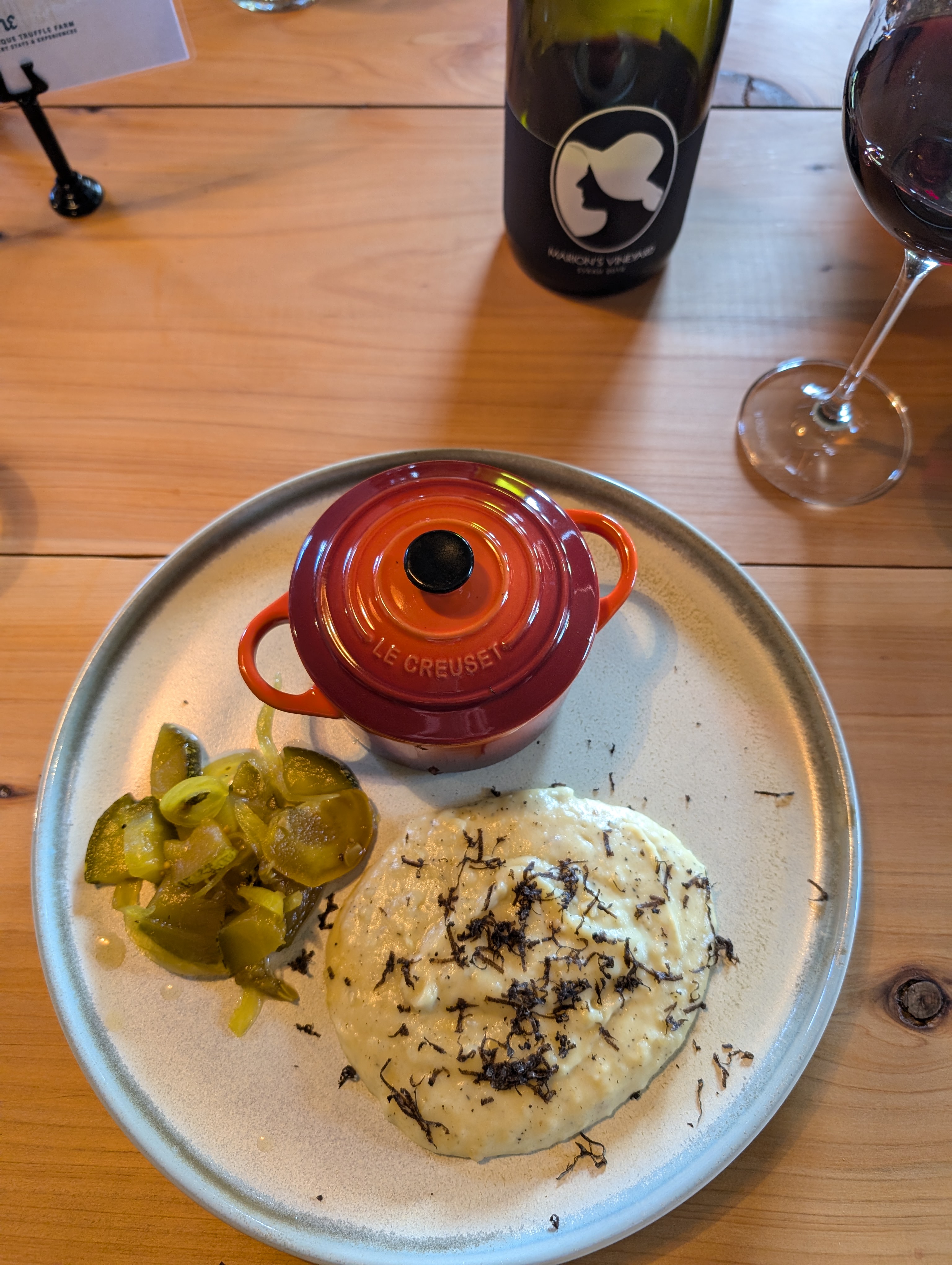
Beef stew with truffle mash at the Truffledore winter feast, cooked by Timo
That food experience was just one of many we’ve had. Our time in Tasmania has been a continual discovery of amazing produce and exceptional dining experiences. The tiny population of 200,000 in Hobart, and barely half a million in Tasmania, seems impossibly small to support the quality of the food and dining scene available not only in Hobart, but all around the state. We have dined in the great food cities of the world and Hobart sits with them all.
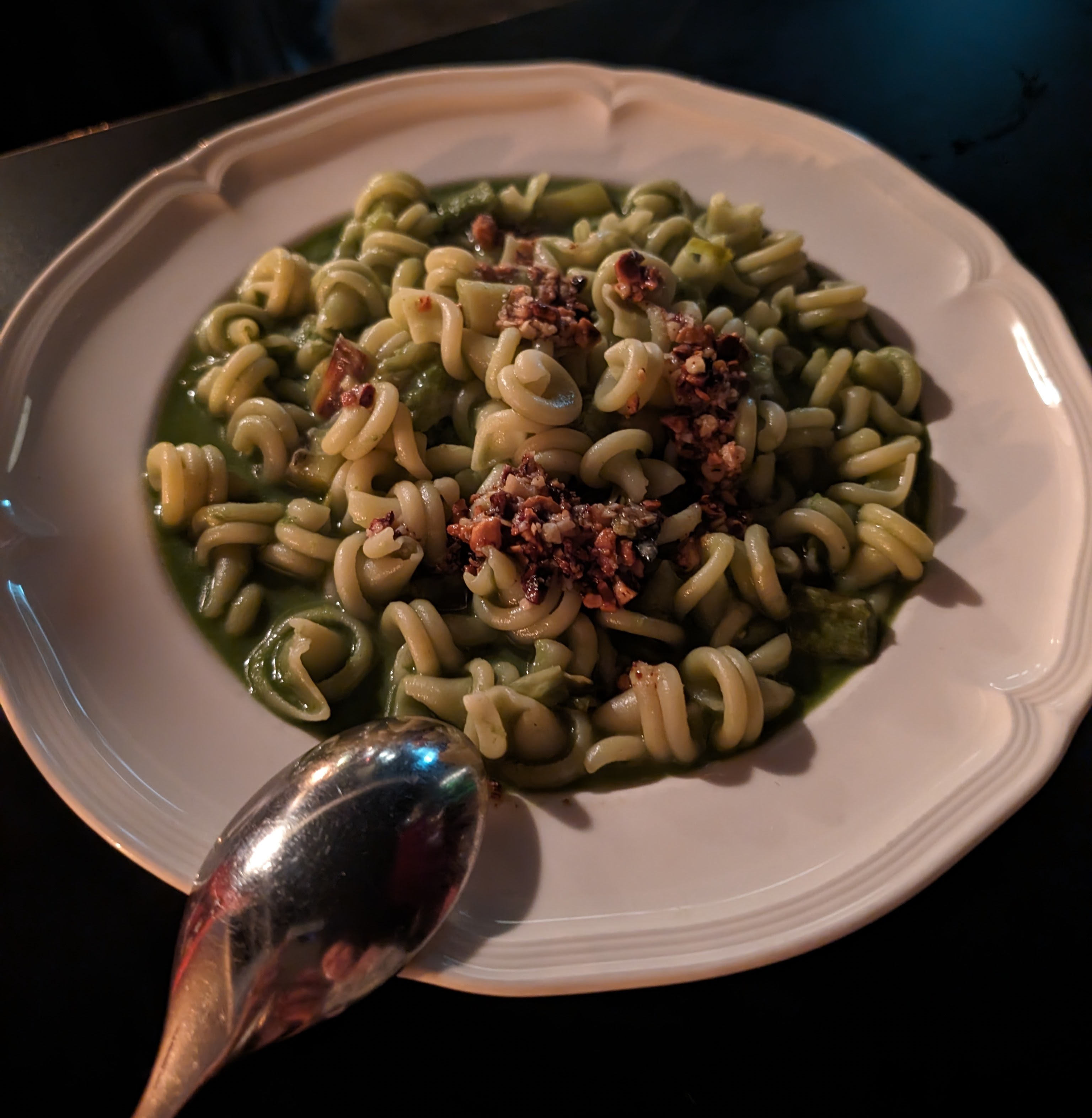
We frequently eat at Ogee in North Hobart
Just last week, the Gourmet Traveller awards named The Agrarian Kitchen as restaurant of the year, which was the first time in the awards’ 45 year history that a Tasmanian restaurant claimed the award. Coincidentally, we were dining there the day before the announcement. It was our second time, after our first visit in summer left us desperate to go again.
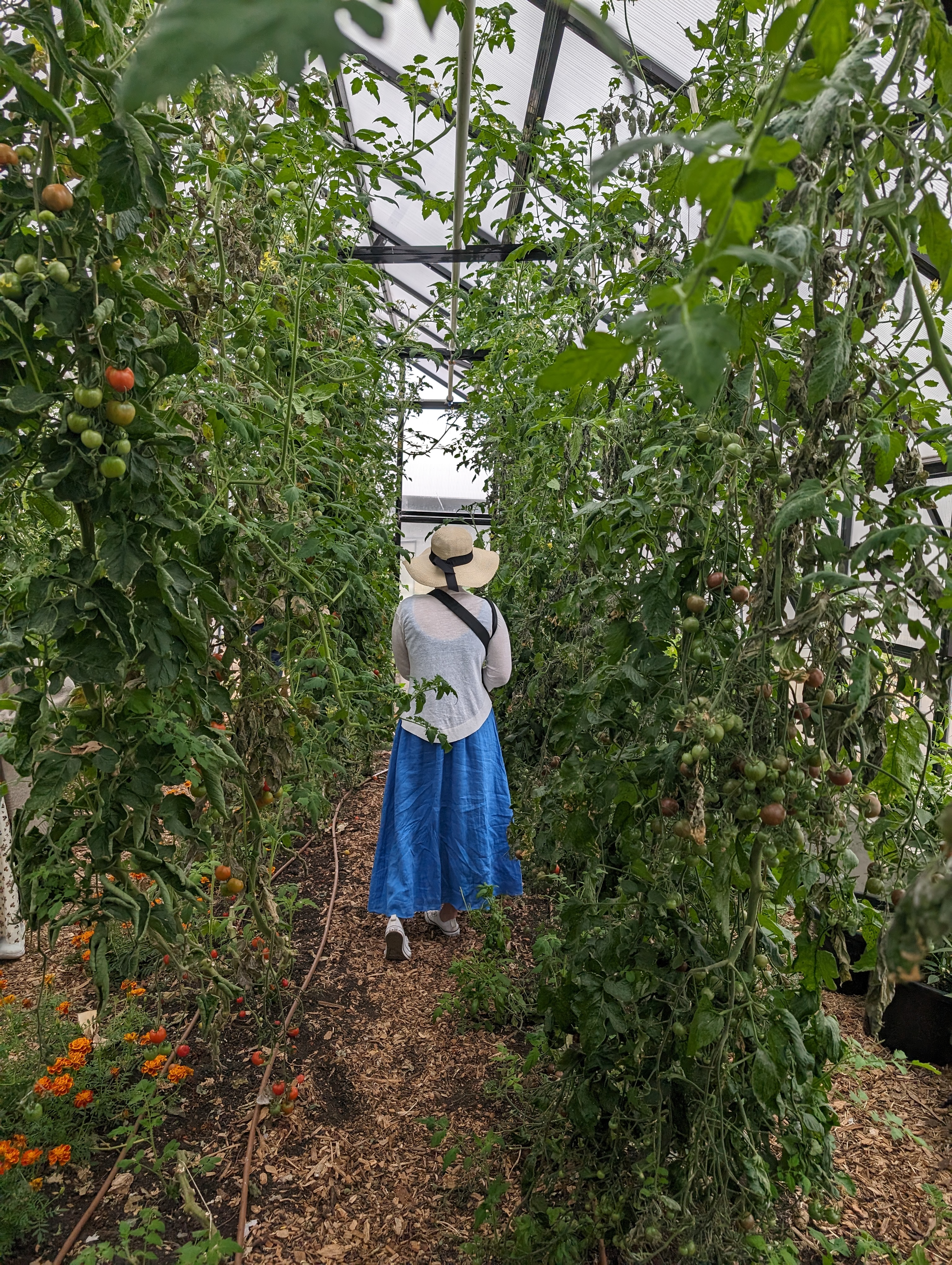
Walking through the greenhouse of ripe tomatoes in the on site gardens at The Agrarian Kitchen in summertime
We’re repeatedly going back to our favourite restaurants in Hobart like Ogee, Peppina, Aloft and Bar Wa Izakaya, which consistently deliver high quality food within an ever-changing menu.
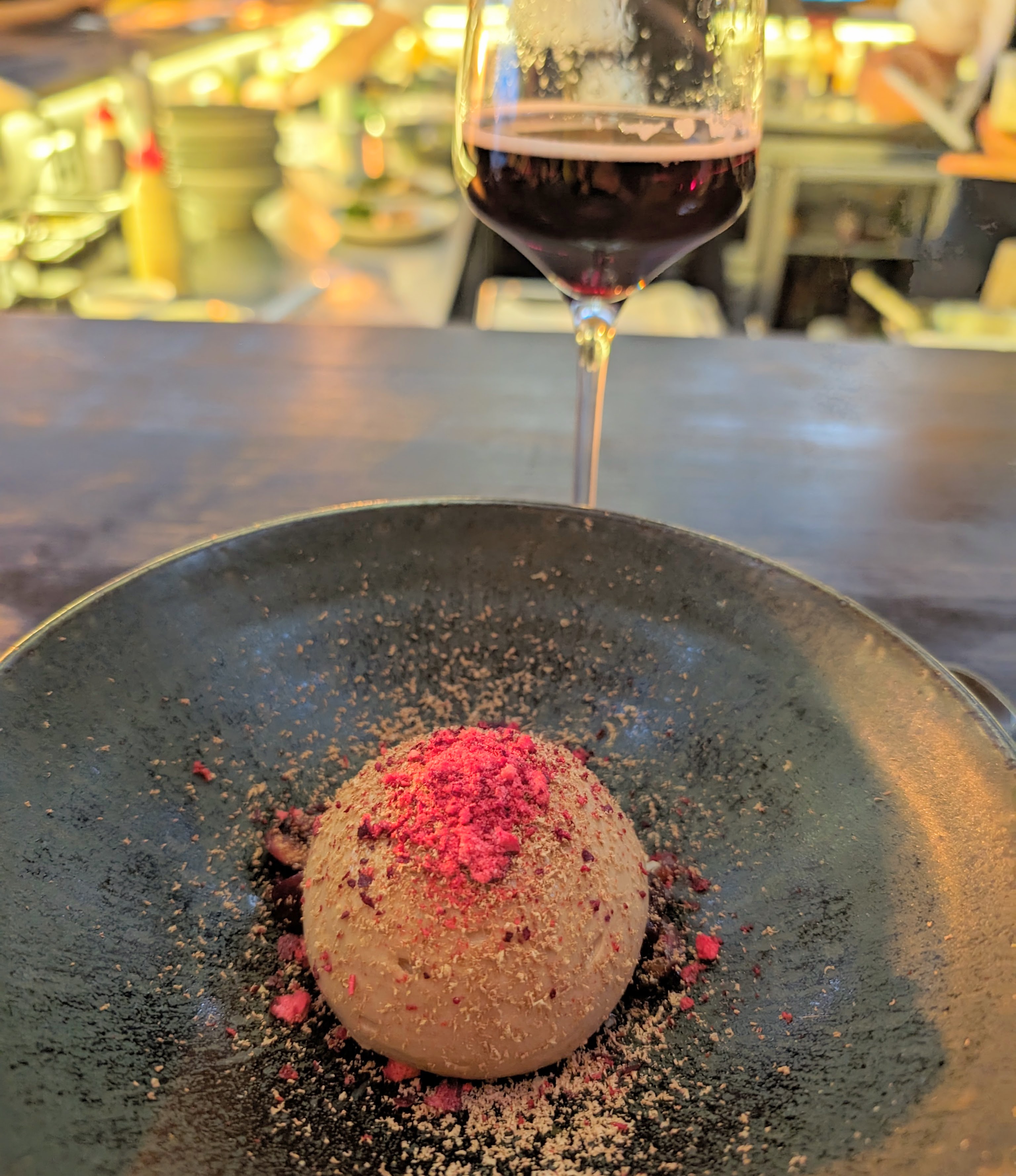
Dessert at Aloft
There is an infectous enthusiasm throughout the hospitality industry in Tasmania. We’ve met countless winemakers - like Lyn and Michael at Viridian and Paul at Sailor Seeks Horse - who will go out of their way to spend hours with you talking about wine making and generously sharing their stories (and the wine of course).
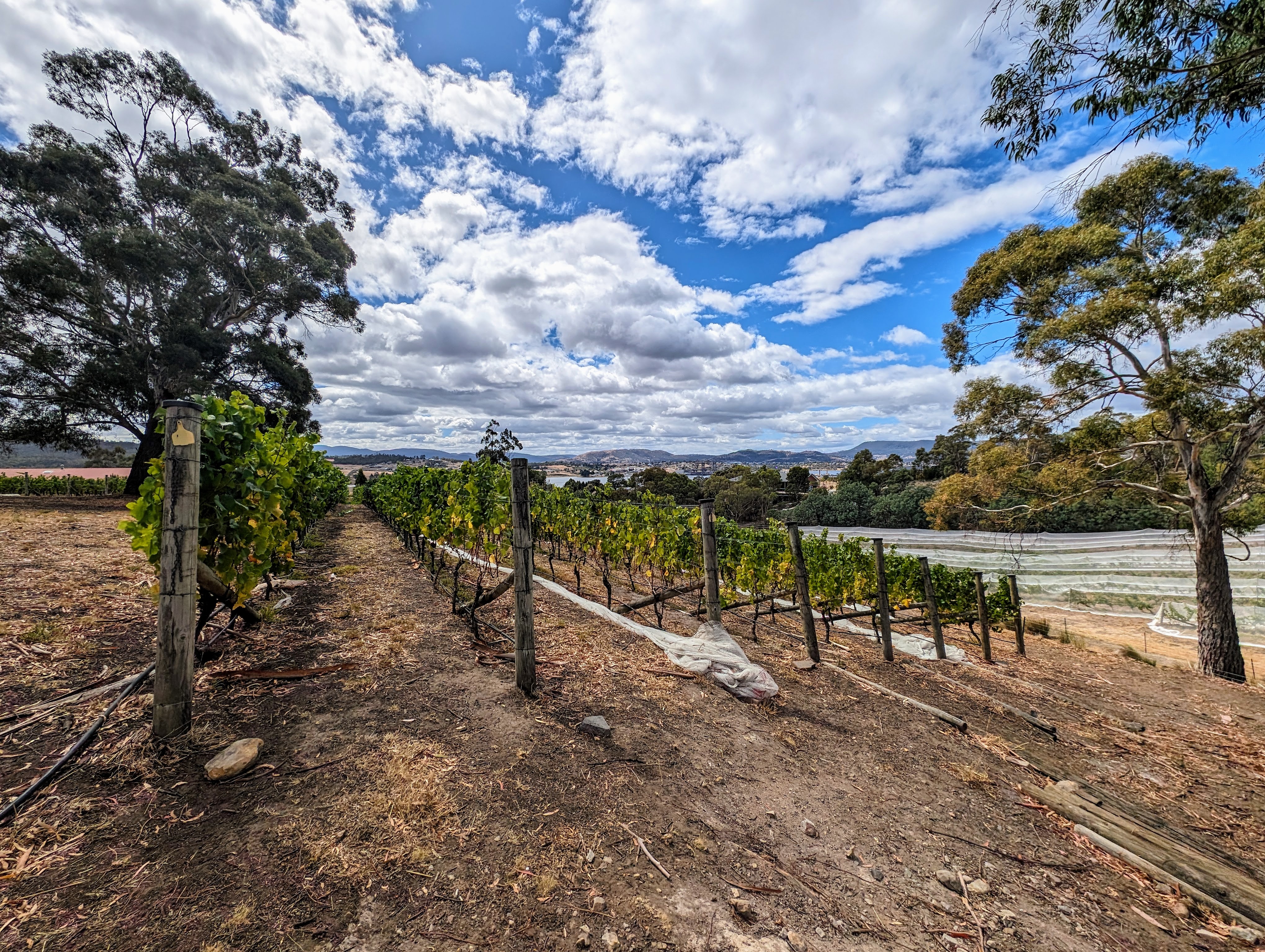
Viridian Wines, Granton, Tasmania
Another substantial factor influencing the world-class dining scene is the high quality produce. A lot of produce consumed in Tasmania comes from Tasmania, and the waters and air that surround this precious island are some of this most pristine on the planet.
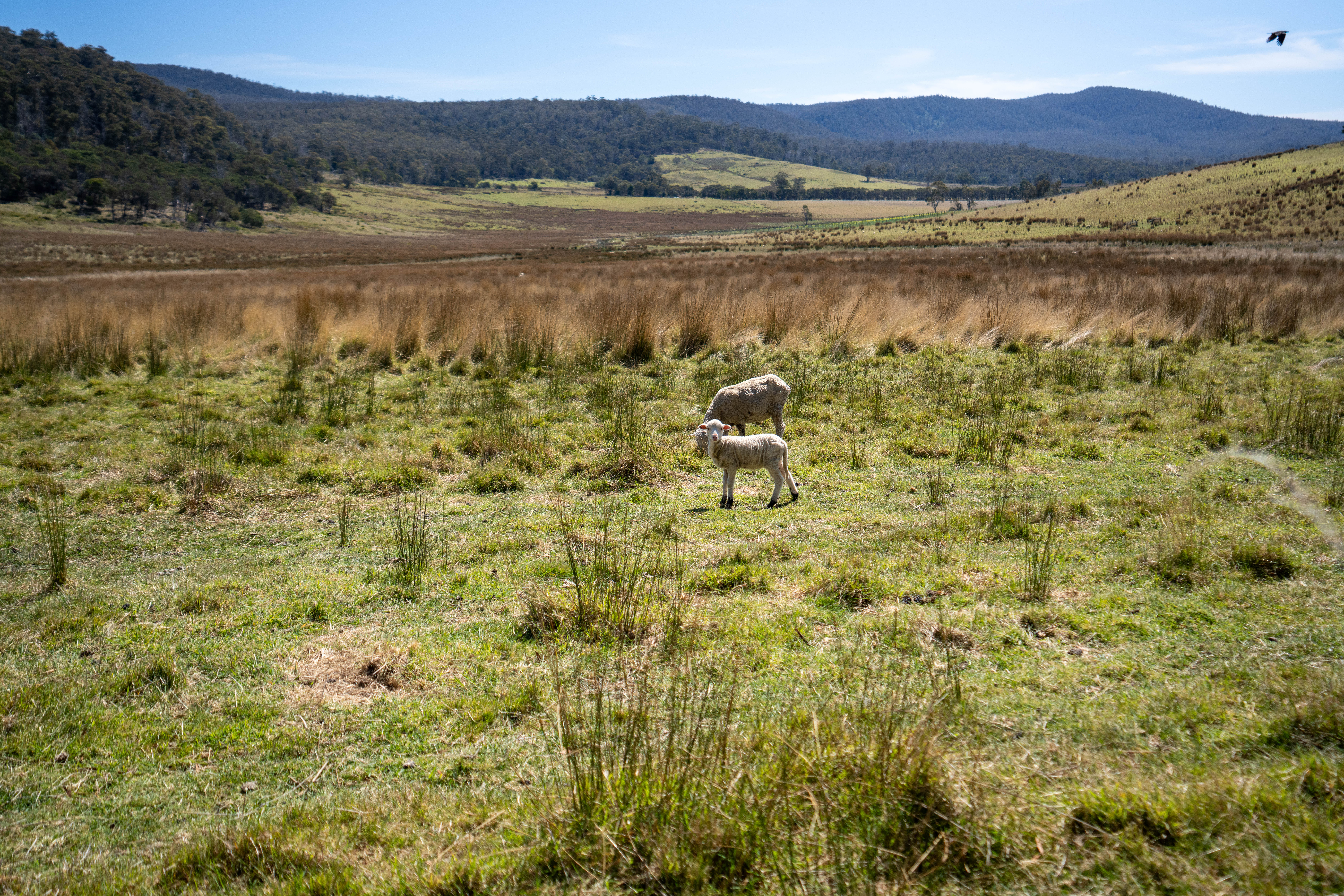
A farm on the east cost, near Freycinet
Winds circulate the globe in horizontal flows. When you look along the 40°S latitude, you’ll find the tip of Argentina and then a vast Southern Ocean, punctuated only by the tiny little islands of New Zealand and Tasmania. Because there is so little land mass, when the “roaring forties” gust along this latitude, they circulate air and ocean currents and not a lot else because not much else lies at 40°S. Unlike in the northern hemisphere where the land masses of Europe, North America and Asia circulate the air of most of the world’s population, including its pollution, the wind gusts at 40°S circulate clean air.
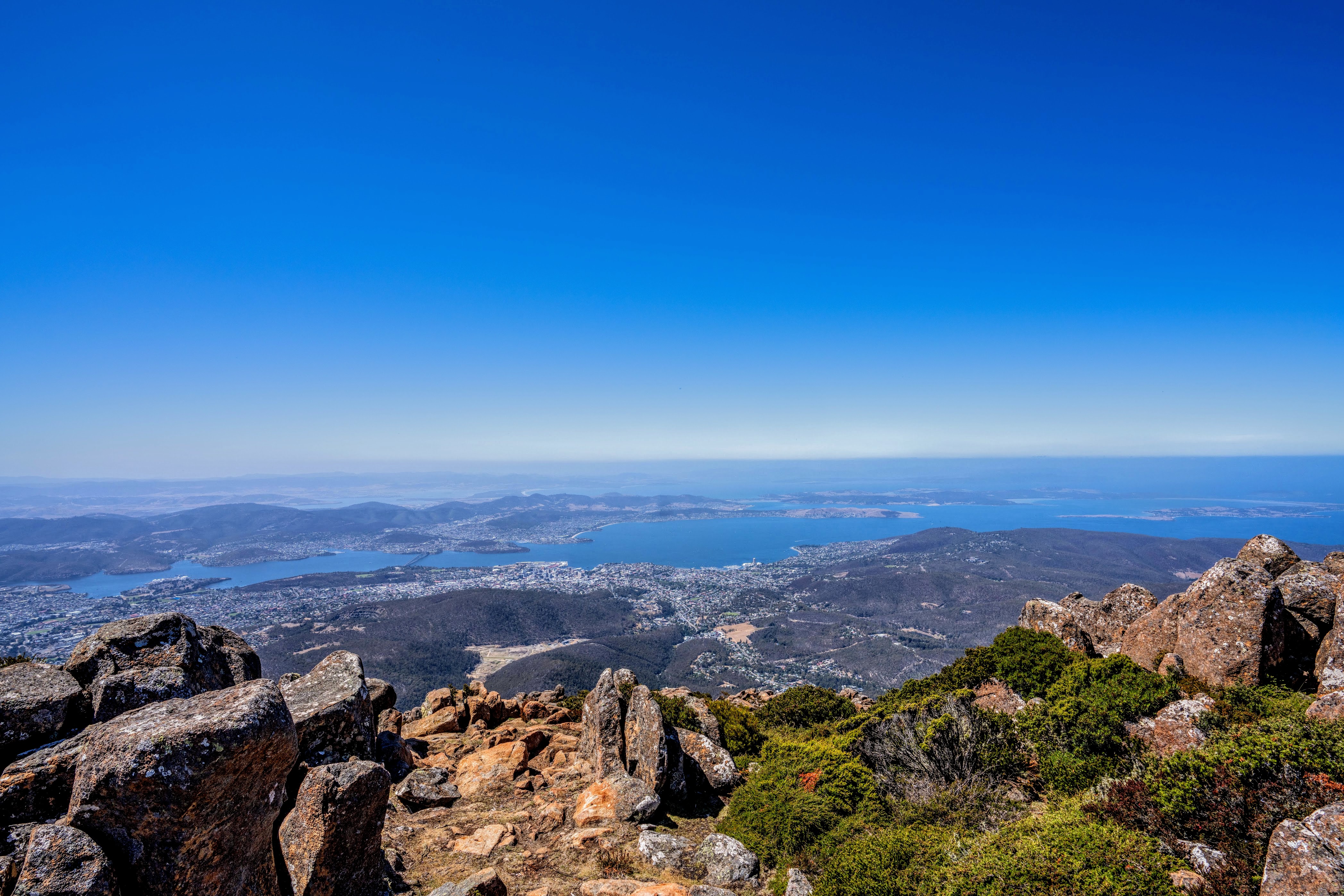
A clear sky day, viewed from the top of kunanyi/Mt Wellington
As a result, down here at the southern edge of the earth, the air is also some of the purest on the planet. At Cape Grim, in the farthest north-west corner of the island, there is an air monitoring station - one of only three in the world - that monitors global “baseline” air pollution. It can do this because there is no interference from local contamination. It’s regularly touted as the place with the cleanest air on earth. It is also the site of Cape Grim Beef, supplier of grass fed, rigorously graded beef.
On the opposite side of the island, at Tasman Sea Salt, Chris and Alice are harvesting sea salt straight from the Tasman Sea. They told us the water there, where the Southern Ocean meets the Tasman Sea, is the purest in the world. They extract sea water and make deliciously pure sea salt. Their Salt Sommelier experience takes guests on a tour through their salt works and then Alice provides a curated tasting experience, pairing their fine salts with delicious bites she has lovingly prepared in her home kitchen. The lovely folk at Mayfield Estate provide the stunning venue for the experience and a wine pairing to accompany the food.
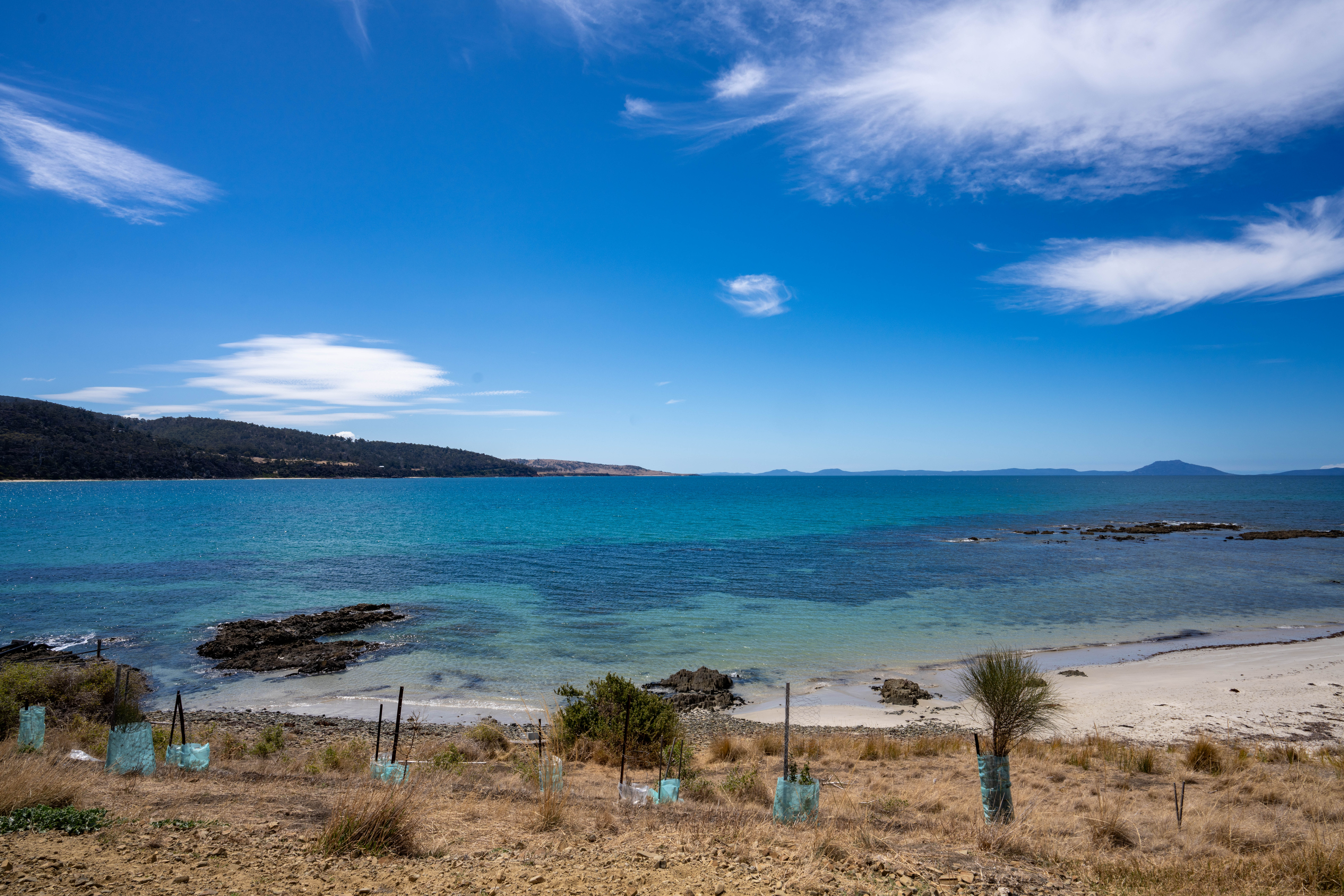
The waters at Tasman Sea Salt
Great things happen at the 42nd parallel. Tasmania is Australia’s finest cool-climate wine producing region, largely dedicated to premium pinot noir, sparkling, chardonnay and riesling. The Coal River Valley - one of eight unofficial wine growing subregions in Tasmania - sits squarely at 42°S. Some of the wines coming out of Frogmore Creek celebrate this lovely line of latitude under their 42°S label. The fruit-forward pinot noir is exemplary of the flavour complexity that can be found in a well-made pinot noir - a fact that is not well understood by many red wine drinking Australians on the mainland.

Collecting Tasmanian wine
And while it already has a well-earned reputation as a world-class wine region - under a single geographic indication (GI) - there is incredible potential for growth and discovery. The wines are phenomenal and I can’t help but feel Tasmanian wine is on the brink of exploding onto the global stage.

Vineyards at Frogmore Creek, Coal River Valley, 42°S
We love taking our visiting guests to our favourite wineries. Some, like Stefano Lubiana and Viridian, are practically our neighbours here in the Derwent Valley. Over in the Coal River Valley, we love visiting Puddleduck (how can you resist a sparkling called bubble duck!), Pressing Matters, and of course, the reputable winemakers at Pooleys and Frogmore Creek, where you can also enjoy lunch. Further afield, we also love the exquisite cellar door at Bream Creek Vineyard (and the basque cheesecake) and the tasting experience at Mewstone Wines. And then there are all of those small wine producers without cellar doors who will happily meet you by appointment in casual but authentic settings to share their wine.

A wine tasting off the back of the ute with Paul from Sailor Seeks Horse, Huon Valley
Also at these magical southern latitudes, the night skies glow with aurora australis. We were so lucky to be here on that weekend in May when a major sunspot fired off multiple flares that led to one of the best auroras ever seen on earth. We watched from our backyard, and then later from a hill nearby, as the technicolour display danced overhead.
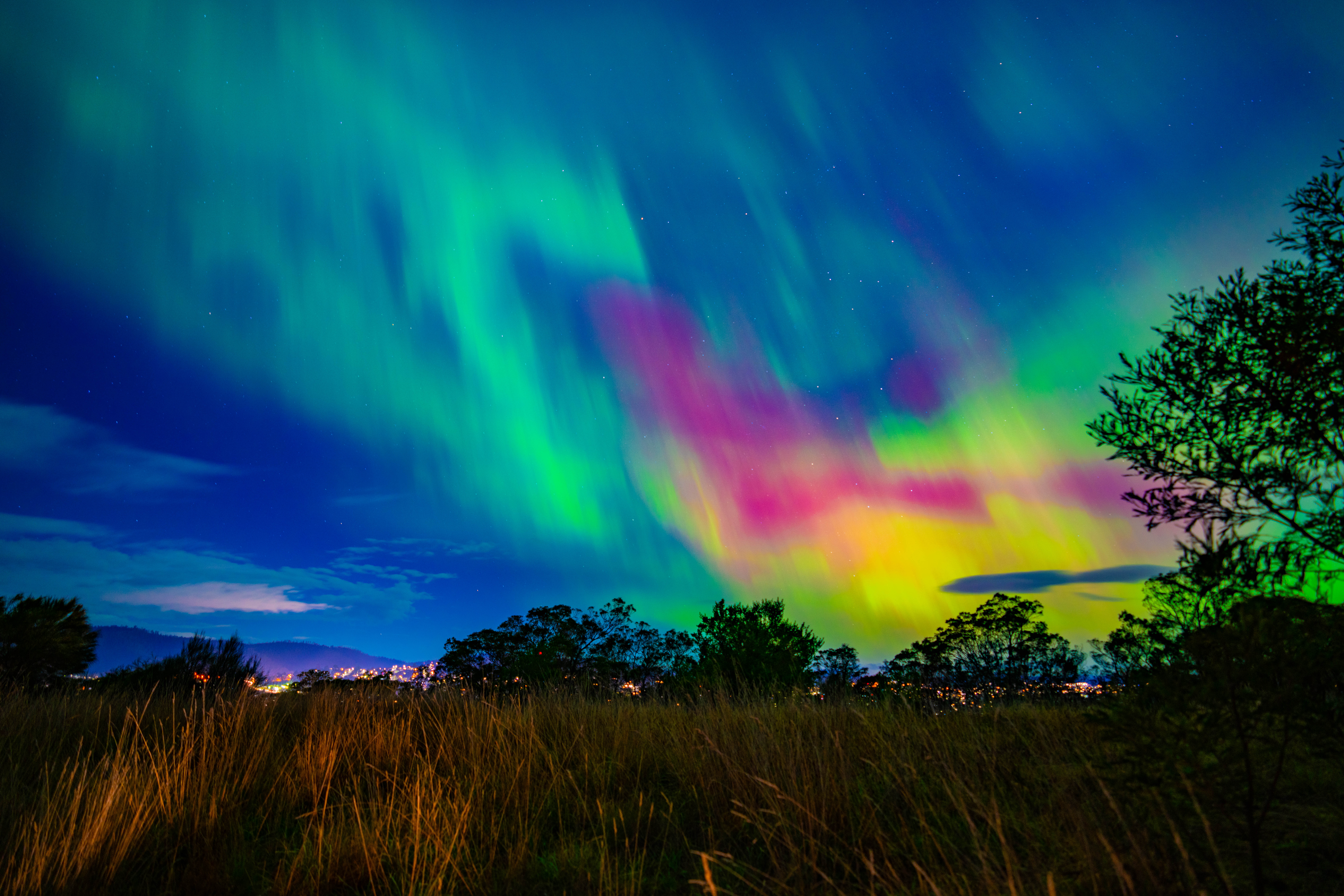
Aurora Australis, viewed from Rosney Park, 11 May 2024
The Tasmanian skies are not just spectacular when illuminated by the southern lights. On clear nights, which are frequent, these southern skies are sprinkled with stars so thick that the southern cross is elusive. And in summer, the long days were filled with bright blue skies scattered with soft white clouds that didn’t release a drop of rain for six weeks. And in between, there have been countless dawns and dusks of pretty pastel hues as the sun sets and rises each day over the River Derwent.
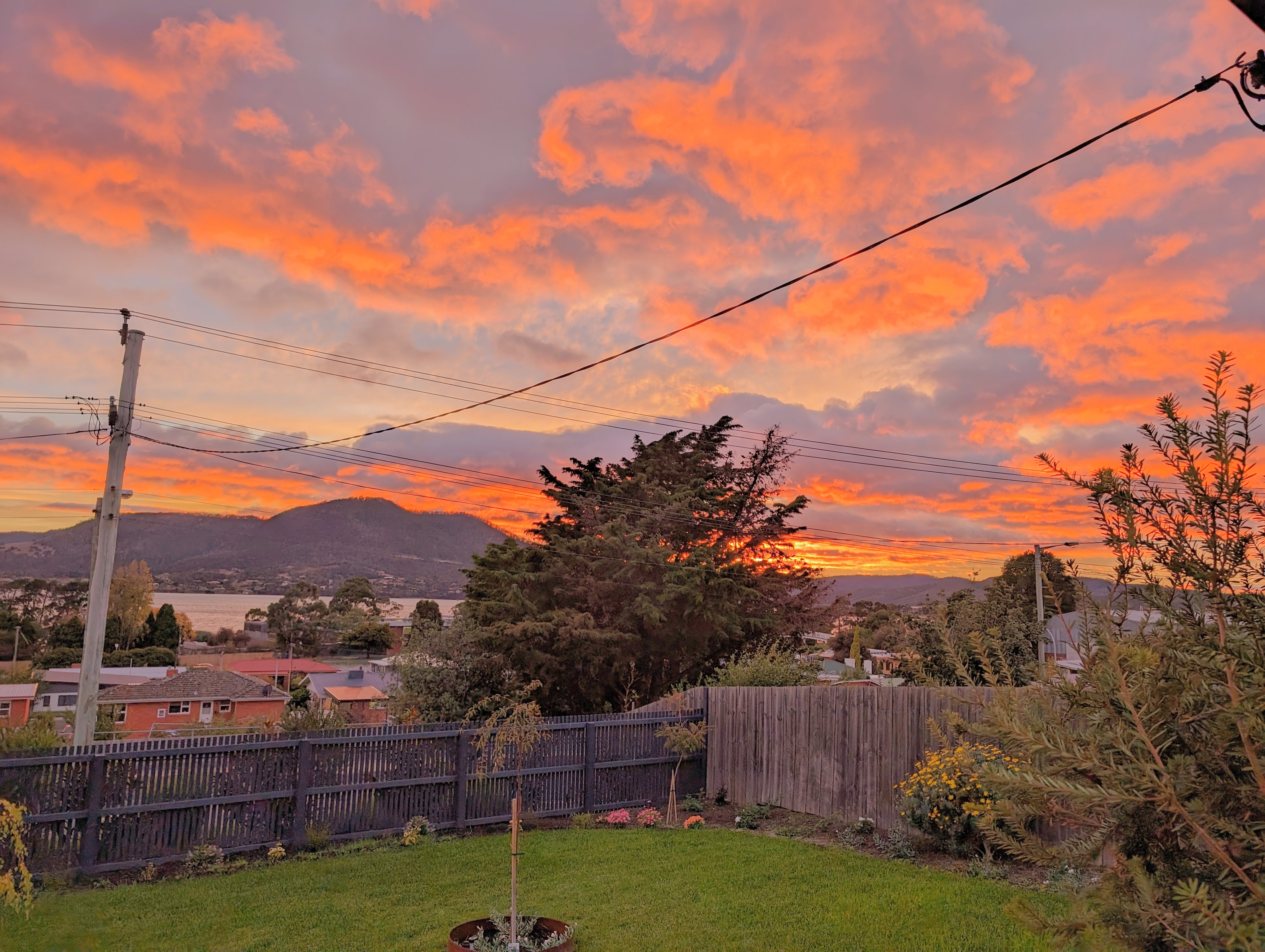
Sunrise from the living room window
But even on her moodiest day, when the polar winds blow up from Antarctica, thick grey clouds gather, and the temperature drops to freezing, there is beauty to be found. It is in the trees dripping with moss and luminescent fungi on wet forest floors on the wild west coast. It is the snow-capped peak of kunanyi, rising above the city into clear blue skies, glimpsed from almost anywhere in Hobart. It is the cosy fireplaces in beautifully restored restaurants and pubs - like the Clarendon Arms in Evandale and the Lost Captain in Huonville - that are a destination in themselves.
Tasmania has turned the off season into an asset: celebrating the dark, long winter with music, art, mid-winter feasting and of course, the seminal Dark Mofo winter pagan festival (although, unfortunately on hold for the time being).

Fungi on the forest floor, takayna/Tarkine, west coast
And in places like this, when winter particularly bites, summer is all the more celebrated. Our first summer here was perfect. It was warm and dry, but never humid, and the long days stretched those blue sky days well into the night.
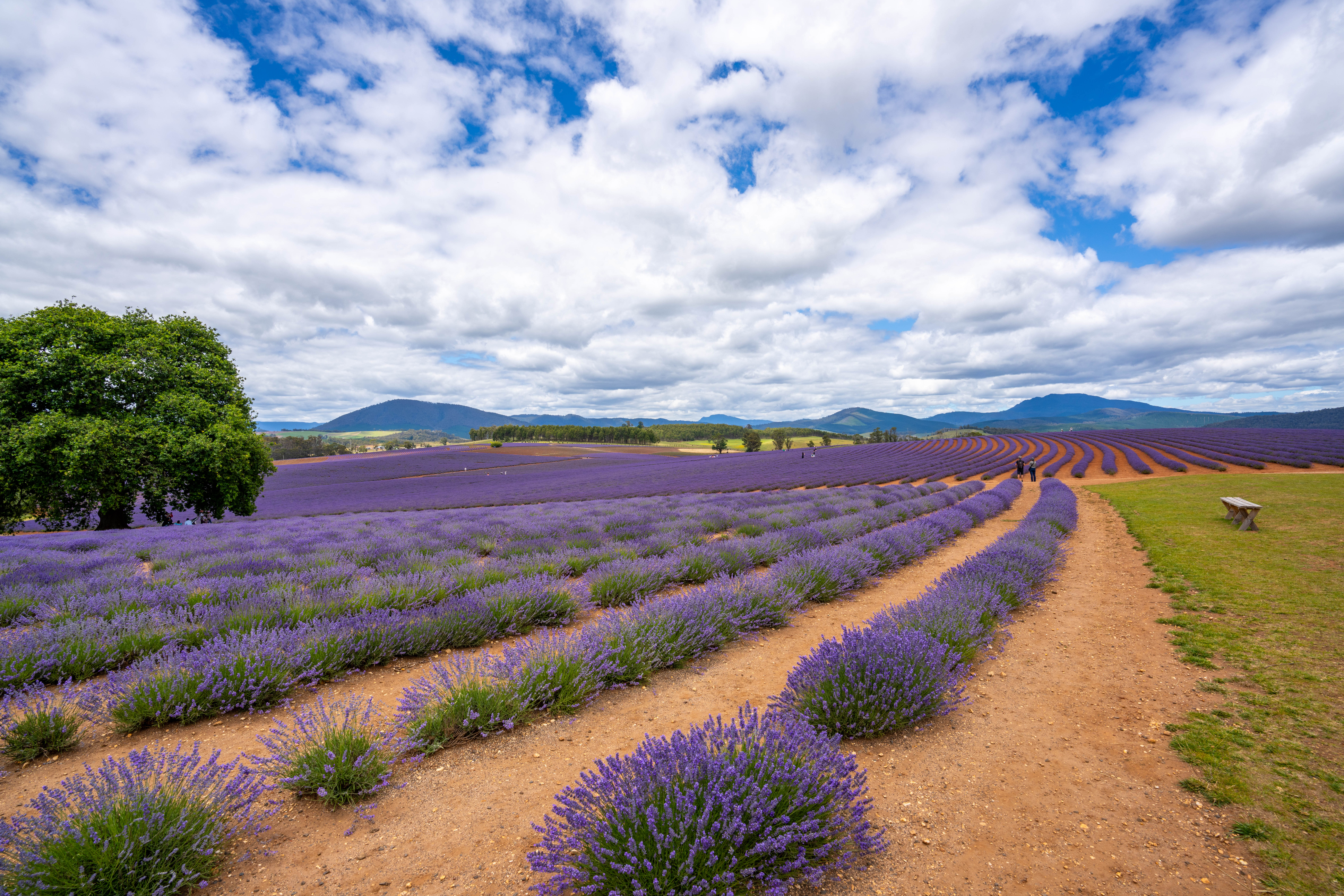
The lavender fields in bloom at Bridestowe Lavender Estate, Nabowla, north east
I regularly found myself pottering outside in the garden well past dinner time, not realising nor caring that it was 8.00pm. With light and warmth in abundance, time slowed and accomplishments grew. In the year that we’ve been here the garden has been transformed from bare grass and gravel to an evolving space for enjoyment in all seasons. There are garden beds of flowers winding in gentle curves around newly laid turf, manicured pathways of golden gravel, a backyard shed matched in colour to the house and a focal fire pit enveloped by sandstone walls and mulched garden beds of natives. A vision brought to life with the help of fantastic locals providing hardscaping and landscaping services.

The backyard following our landscaping renovation
My favourite place in the house to be is sitting on the couch at the large living room window. From there, I can observe the changing skies (and the MONA ferry passing by) and contemplate the visitors who come to spend time in my garden. I see bees floating in and out of the row of lavender. A family of yellow-tailed black cockatoos land in the native trees at the fence to feed on the seeds. Tiny sparrows dart in and out of the garden beds, flicking up mulch as they look for warms. The birdsong floats through the house at dawn and dusk.
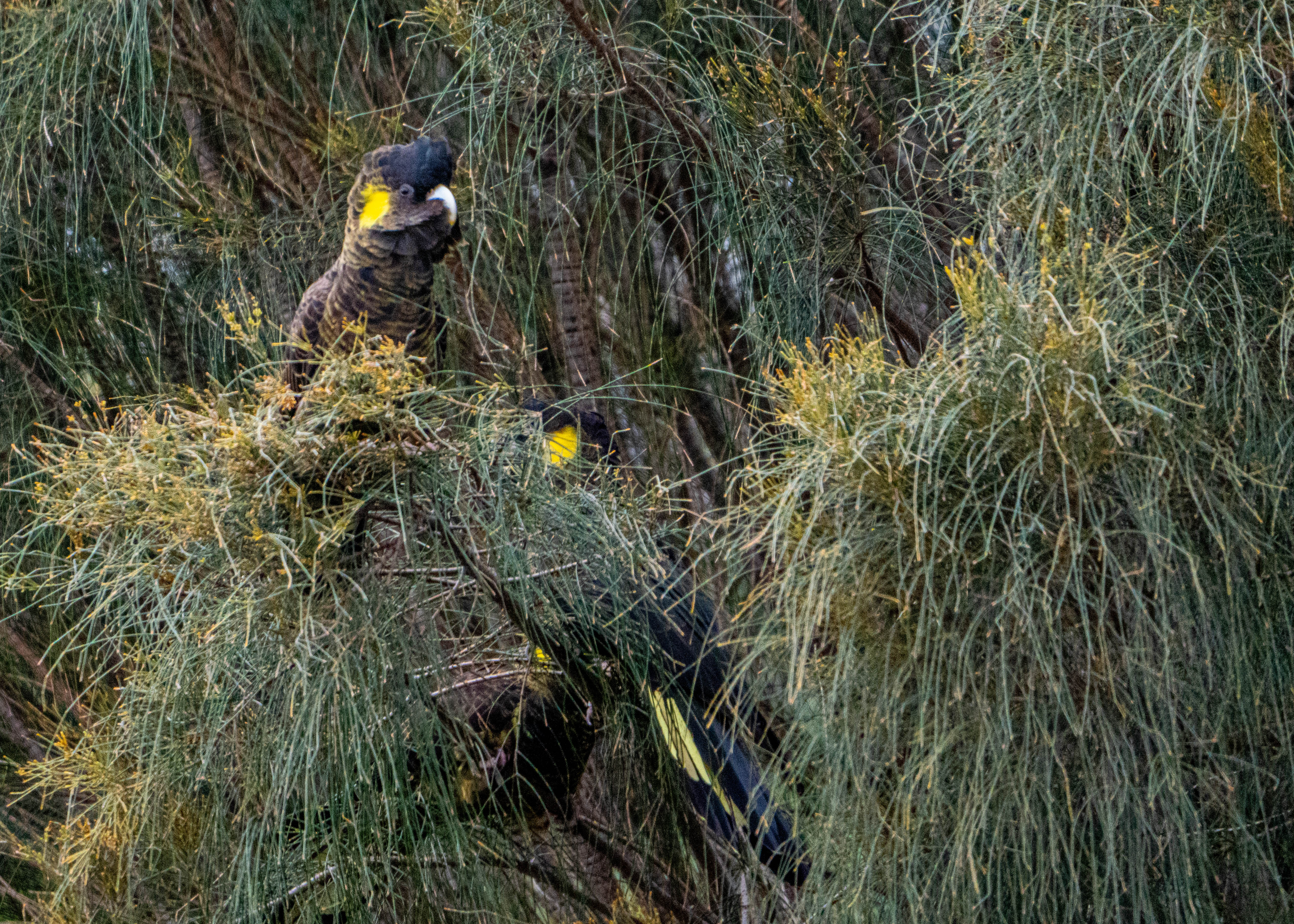
Yellow-tailed black cockatoos in our front yard
From my favourite vantage point there at the window, which is often bathed in morning sun, I’ve watched my garden change with each passing season. The beauty of the pistachio trees turning flame orange in autumn. The comfort of flowering natives throughout the frosty winter. The delight of weeping cherries blossoming and daffodils emerging from the ground in spring. And the satisfaction of growth and time to tend to it all on those long days during the warm summer months.
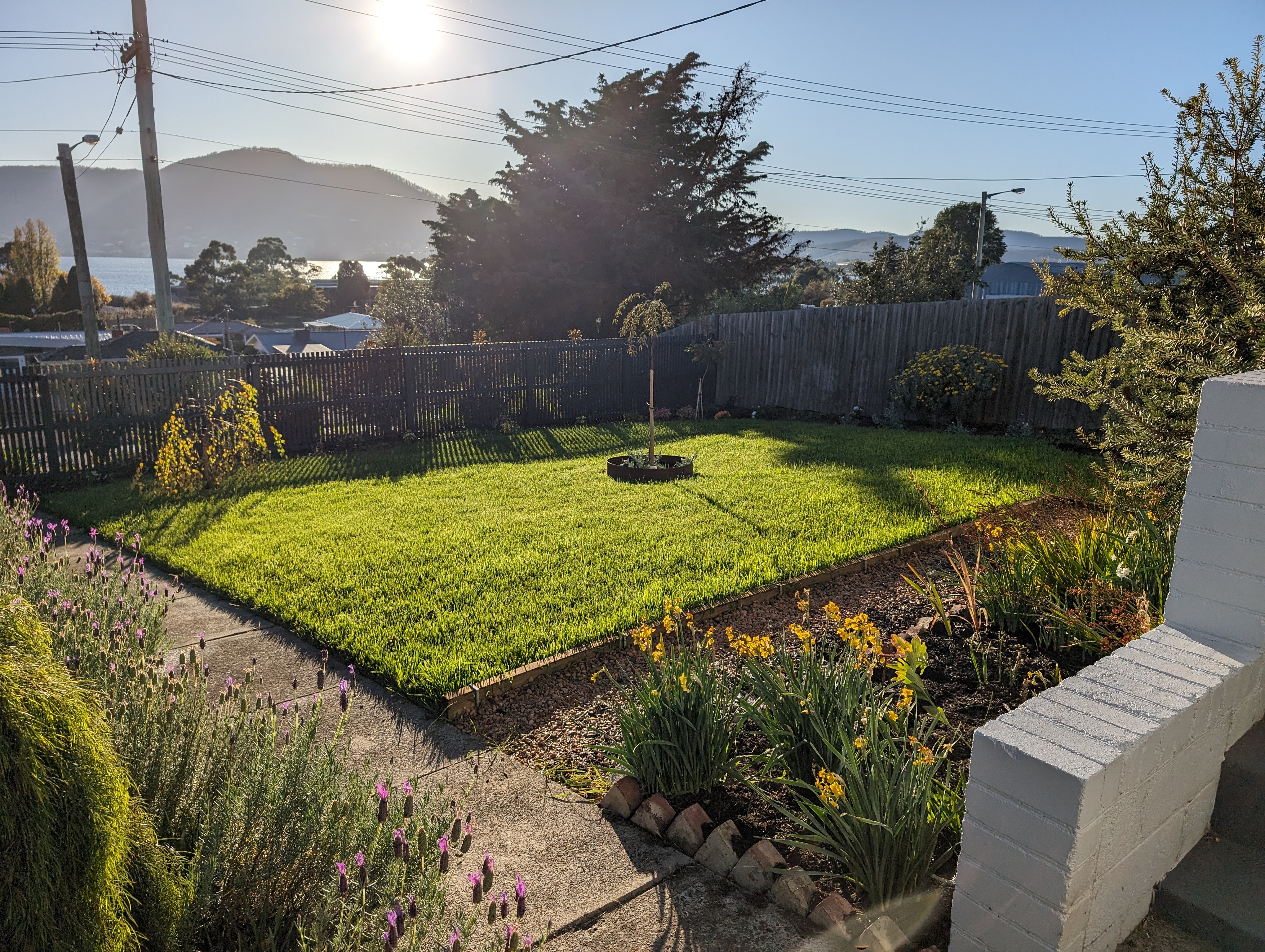
The front garden in bloom
Beyond my own little garden, we found impossibly beautiful scenery when we adventured up and down the east coast in summer. We stayed at Freycinet Lodge and were dazzled by wineglass bay. We tasted our way along the east coast wine trail and fell in love with Milton Vineyard. We rented a house with friends on Bruny Island over the new year, finding treasures like the bread fridge and get shucked oysters.
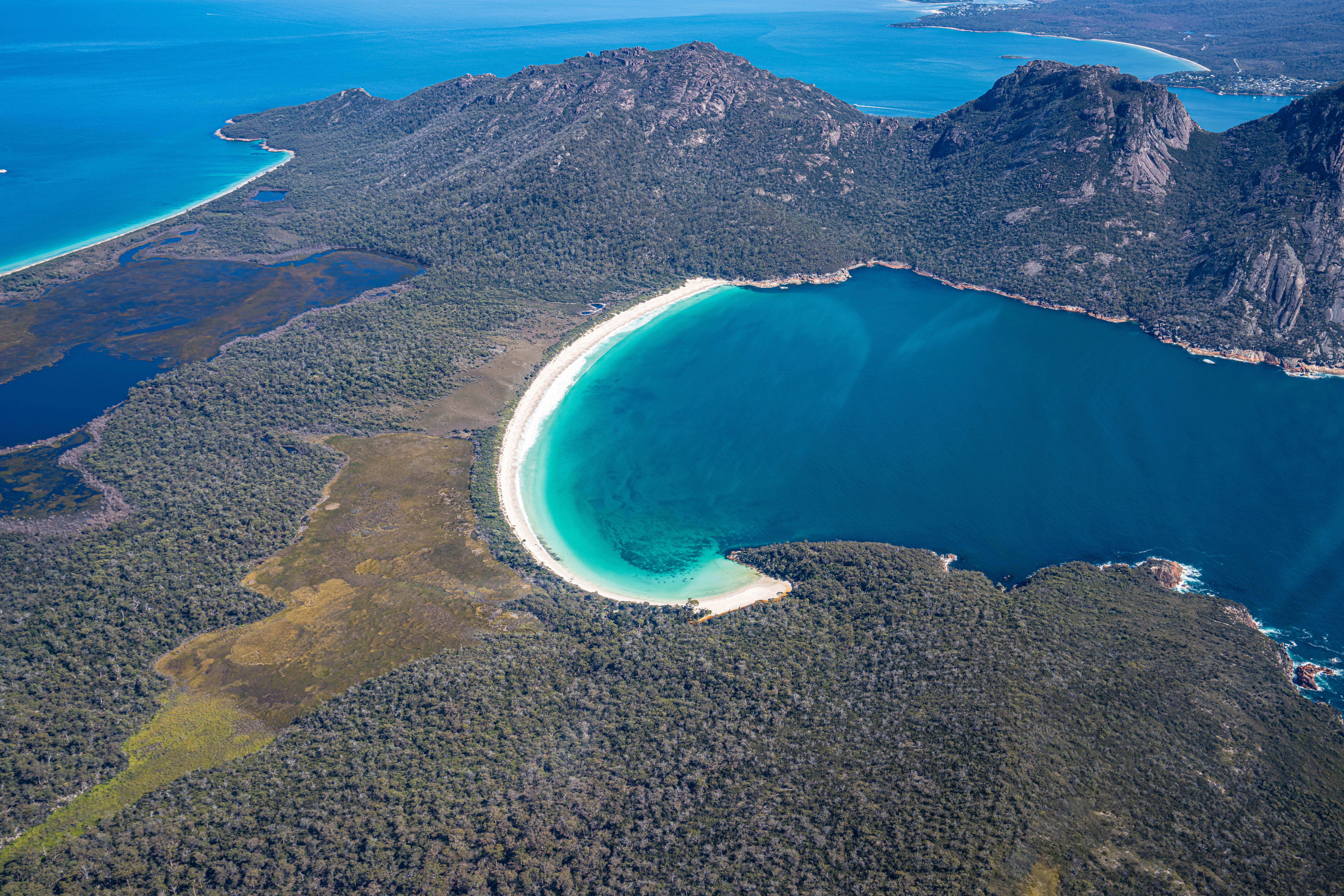
A view of wineglass bay, from above
We had a picnic in the shade of a casuarina overlooking the turquoise waters and flaming rocks in the secluded piece of paradise that is The Gardens, hidden away at the northernmost part of the Bay of Fires that is accessible by car.
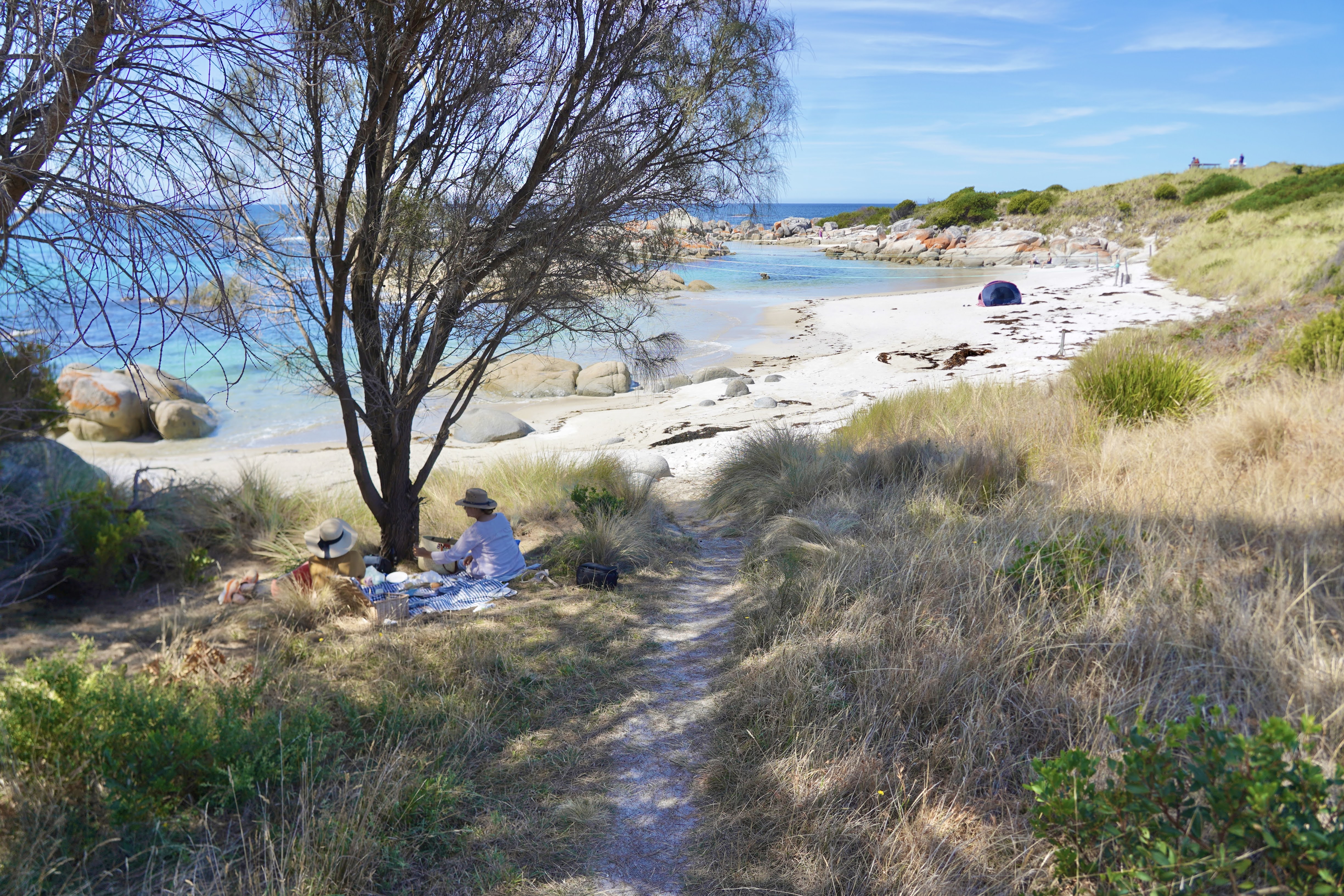
A summertime picnic at The Gardens, Bay of Fires
We swam in the clear water and walked along the white sands of Taylors Beach under a near-cloudless sky, and not a soul shared that idyllic beach with us that day.
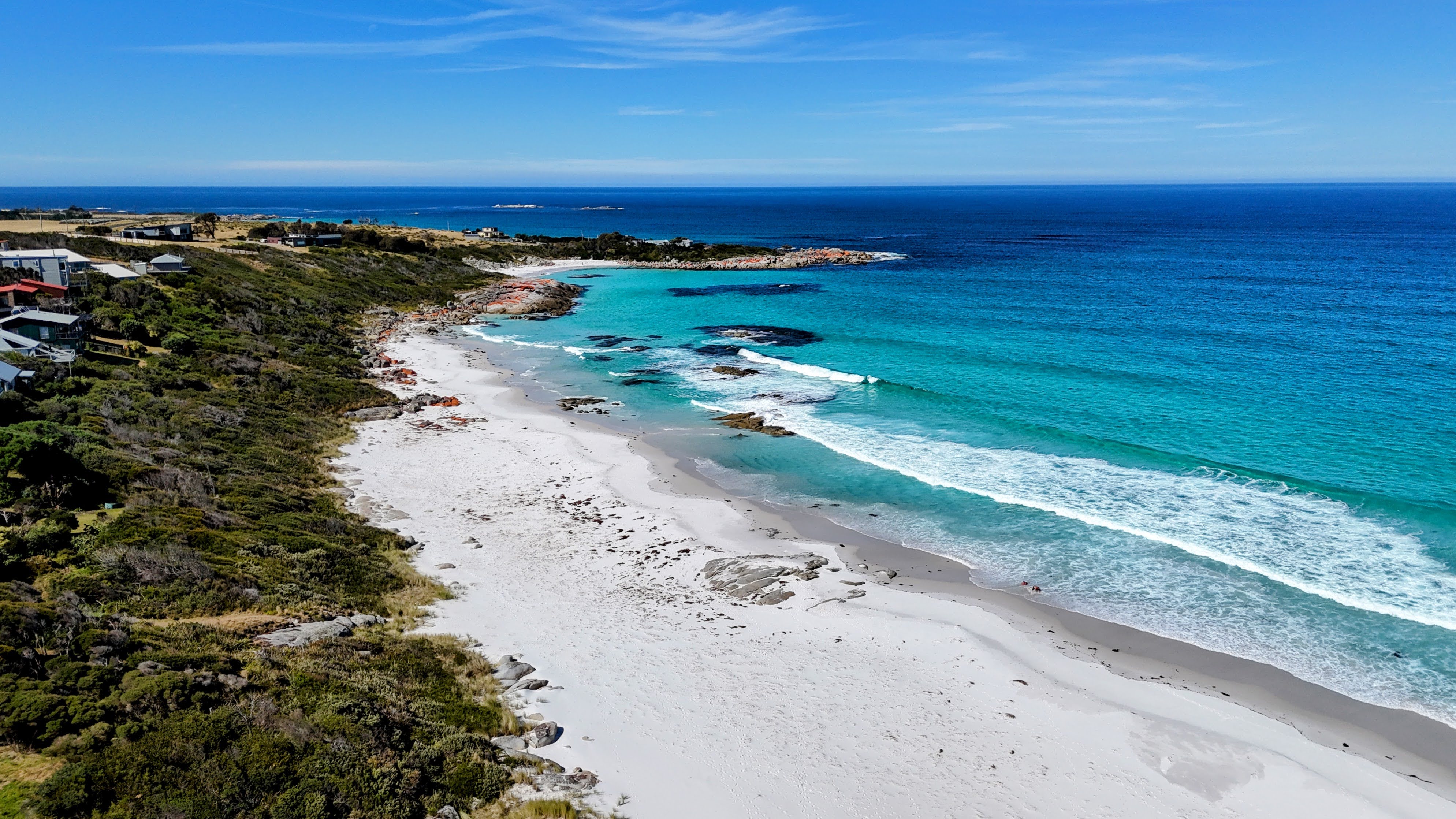
Taylors Beach, Bay of Fires
On another perfect summer’s day, we drove to a little sea-side place called Cockle Creek. It is the most southern place you can drive to in Tasmania. Standing there, on the shore of the bright white sand, the crystal clear water lapping at your feet, feels like arriving at the end of the earth. There is nothing but ocean between there and Antarctica. A dip was irresistible, even in underwear, when swimsuits have been left behind. The sparkling clarity of that water draws you in.
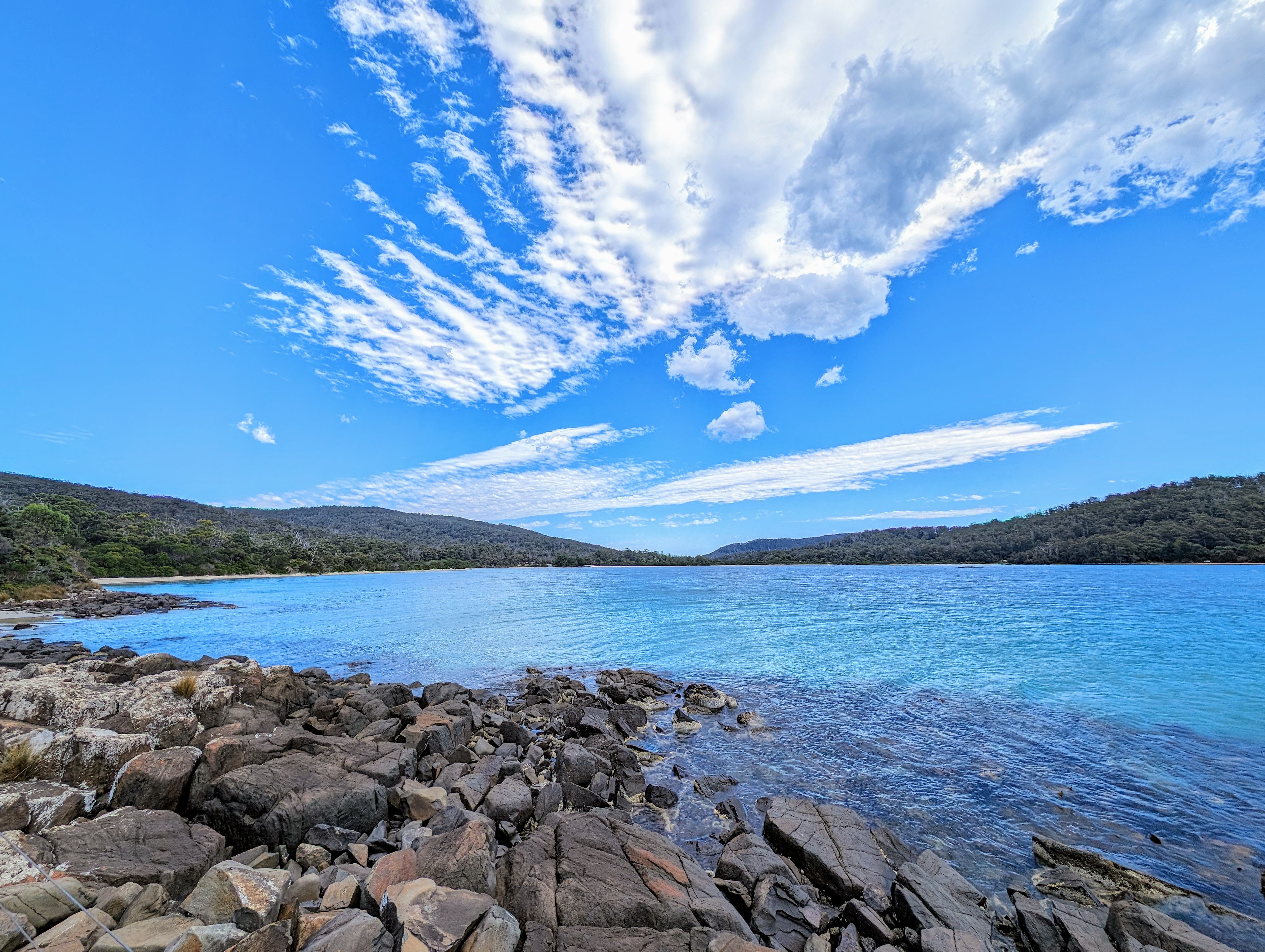
Cockle Creek
Other than its geographical feature as the southernmost drive in Australia, Cockle Creek also marks the end of the South Coast Track, an 85 km multi day hike along Tasmania’s rugged southern coastline that starts in Melaleuca, a tiny settlement only accessible by light plane that arrives on a rocky clearing they call an airstrip.
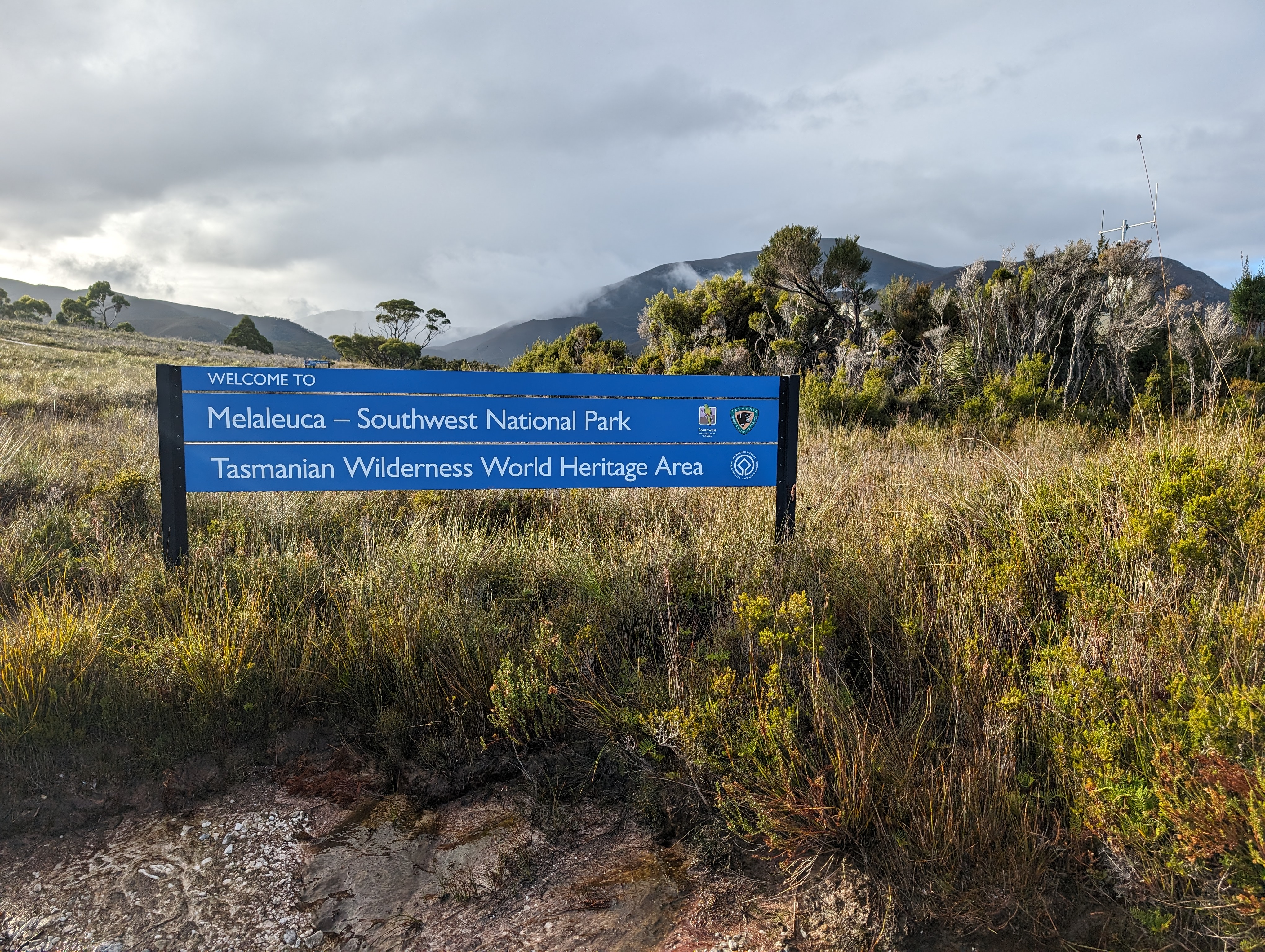
Bathurst Harbour airstrip, Melaleuca
Though I’ve driven to Cockle Creek and flown in and out of Melaleuca, I’ve yet to walk the infrequently travelled path that lies between the two. This part of Tasmania - the Southwest National Park - is a vast expanse of wilderness that must be one of the most isolated and forbidding places on the planet. It is part of Tasmania’s Wilderness World Heritage Area (TWWHA), a one and a half million hectare area covering nearly one quarter of the state. The TWWHA meets seven out of ten of the UNESCO world heritage criteria and is one of only two places on earth that meet as many. In this pristine pocket of wilderness you can find the world’s tallest flowering plant, some of the largest and deepest caves in the world, ancient species of ferns that pre-date the dinosaurs, and evidence of more than 35,000 years of humanity’s interaction with the natural world.
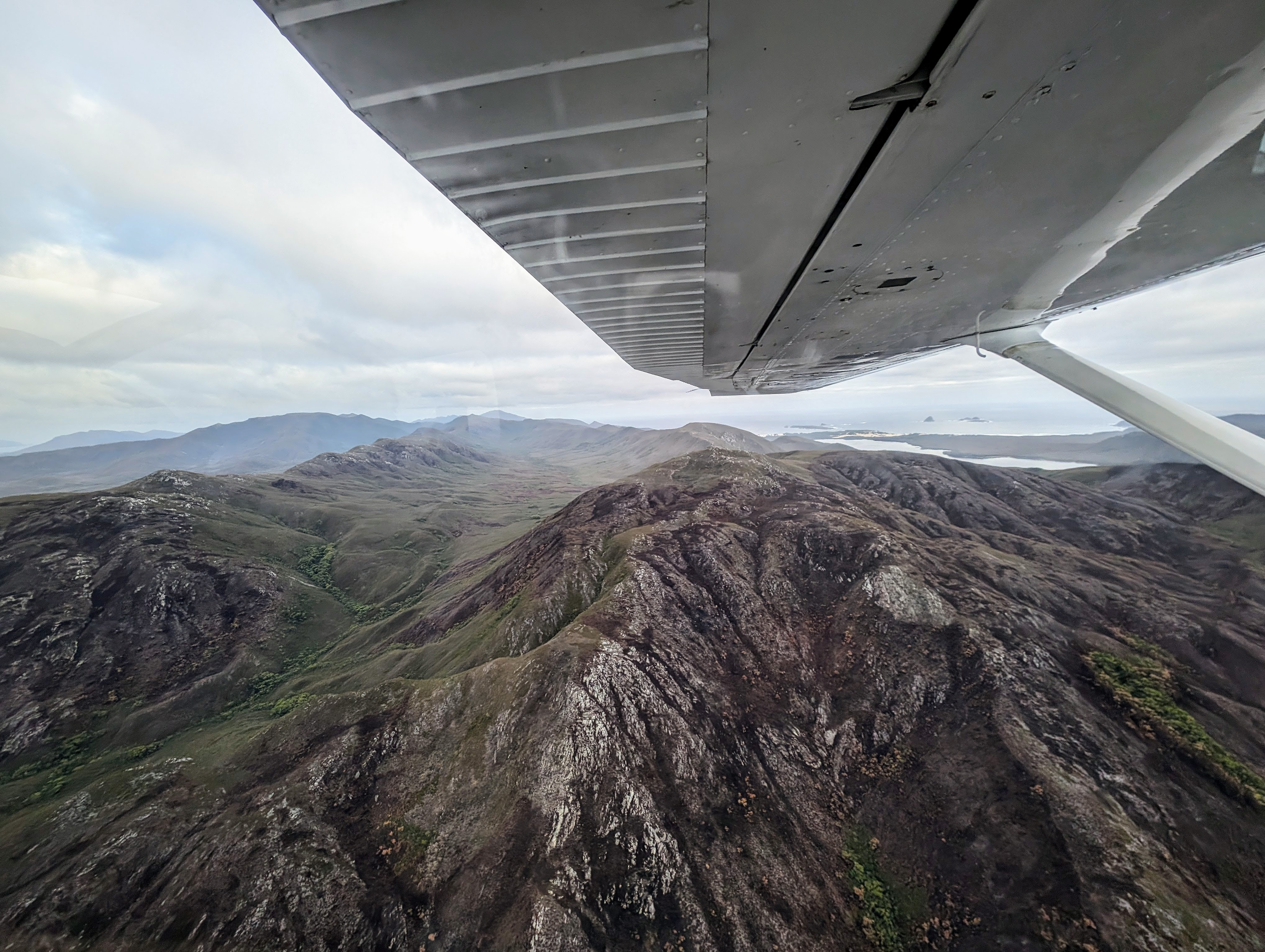
Flying over the remote and wild Southwest National Park
It is no surprise therefore, when natural beauty of that scale and environmental significance sits at your doorstep, that green politics first emerged in Tasmania. Protesters and environmental activists, including the United Tasmania Group, worked together to stop the damming of the Franklin River throughout the 1970s and into the early 80s. Their action saved a key wilderness area in Tasmania and created a political precedent for the raising of environmental concerns in parliament. The United Tasmania Group evolved to become the Tasmania Greens: the first of the world’s now 70-odd Green parties.

At the Tahune Forest Airwalk, on the edge of the Southwest National Park
When we moved into our house, we discovered that we live right on the bike path, and so we purchased bikes. I got a helmet and a clip on basket and re-learnt how to ride a bike. Now we ride our bikes to the Farm Gate Market on sunny Sundays to buy my favourite local honey, fresh vegetables and sourdough crumpets. One late autumn afternoon we rode to MONA for a rosé on the lawn.

My bike at MONA one autumn afternoon
I’ve fallen in love with Tasmania. This heart-shaped land mass has captured me unlike any other place I’ve lived or travelled. I felt at home here almost immediately. I can feel the possibilities. I have a growing sense of community and belonging that is intensified as my life in Tasmania expands and I meet local people doing amazing things.
So, in the middle of winter, a little more than a year ago, when we decided to move to Tasmania, we made one of the best decisions of our lives. We yearn to be here when we’re not, and we crave more of it all while we’re here. At least for a while, you’ll continue to find us in our little blue house on the Derwent River.
